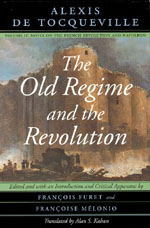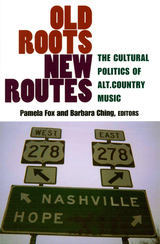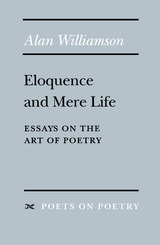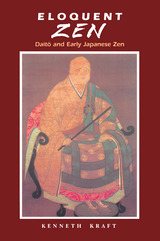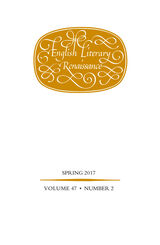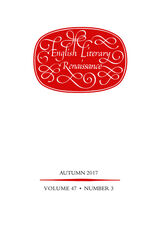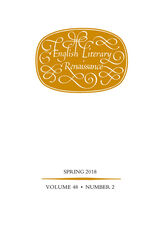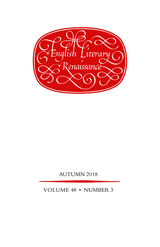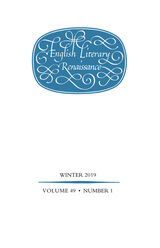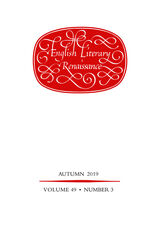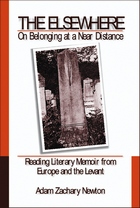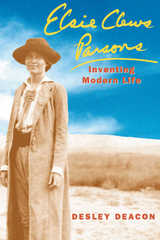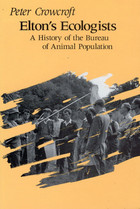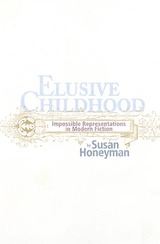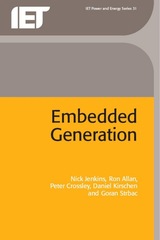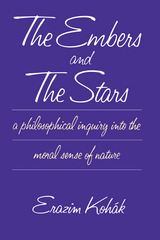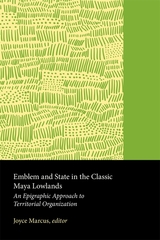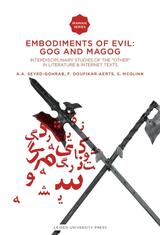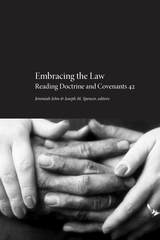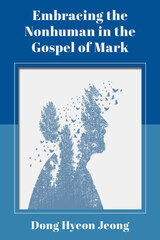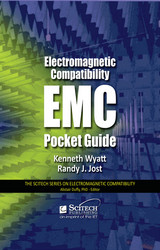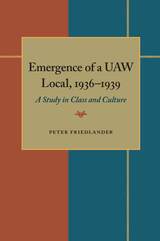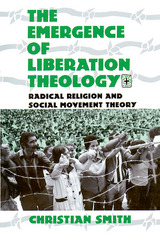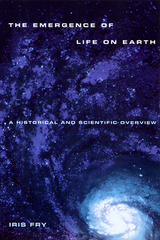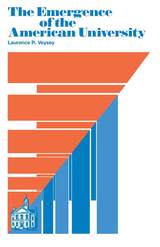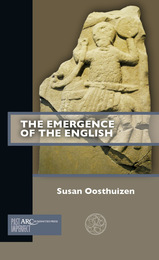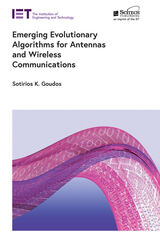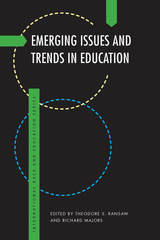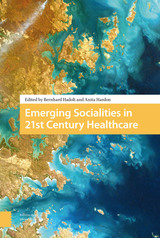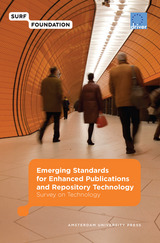 Eloquent Obsessions: Writing Cultural Criticism
Marianna Torgovnick, ed.
Duke University Press, 1994 Out of the core of experience, these essays began as obsessions. Whether founded in some strongly lived moment, deeply held conviction, long-term interest, or persistent and unanswered question, these essays reveal the writer’s voice—personal, often passionate, full of conviction, certainly unmistakable. Marianna Torgovnick has drawn together writings by leading contemporary scholars in the humanities, representing fields of literary criticism, American and Romance studies, anthropology, and art history. Eloquent Obsessions presents cultural criticism at its thoughtful and writerly best. This collection explores a wide range of issues at the intersection of personal and social history—from growing up in the South to exploring a love for France or Japan, from coming of age as a feminist to mapping the history of National Geographic, from examining the cultural "we" to diagnosing class structures in Israel or showing how photography deals with AIDS. The authors here bring writerly genres—autobiography, memoir, or travel narrative—to intellectual tasks such as textual readings or investigating the histories of institutions. Continuing a tradition of cultural criticism established by writers such as Samuel Johnson, Zora Neale Hurston, Edmund Wilson, Hannah Arendt, or Raymond Williams, these essays seek to make a difference, to have an impact, and are based on the fundamental premise that writers have something to say about society. Simply put, this collection offers models for writing eloquently about culture—models that are intellectually and socially responsible, but attuned to the critic’s voice and the reader’s ear. Aimed not just at academics but also at a more general audience alive to the concerns and interests of society today, Eloquent Obsessions, a revised and expanded version of a special issue of South Atlantic Quarterly (Winter 1992), will extend beyond the academy contemporary ways of writing about culture. Contributors. Jane Collins, Cathy N. Davidson, Virginia R. Dominguez, Mark Edmundson, Gerald Graff, Richard Inglis, Aldona Jonaitis, Alice Yaeger Kaplan, Catherine Lutz, Nancy K. Miller, Linda Orr, Andrew Ross, Henry M. Sayre, Jane Tompkins, Marianna Torgovnick
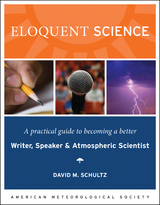 Eloquent Science: A Practical Guide to Becoming a Better Writer, Speaker and Scientist
David M. Schultz
American Meteorological Society, 2009 Eloquent Science evolved from a workshop aimed at offering atmospheric science students formal guidance in communications, tailored for their eventual scientific careers. Drawing on advice from over twenty books and hundreds of other sources, this volume presents informative and often humorous tips for writing scientific journal articles, while also providing a peek behind the curtain into the operations of editorial boards and publishers of major journals. The volume focuses on writing, reviewing, and speaking and is aimed at the domain of the student or scientist at the start of her career. The volume offers tips on poster presentations, media communication, and advice for non-native speakers of English, as well as appendices on proper punctuation usage and commonly misunderstood meteorological concepts. A further reading section at the end of each chapter suggests additional sources for the interested reader, and sidebars written by experts in the field offer diverse viewpoints on reference topics.
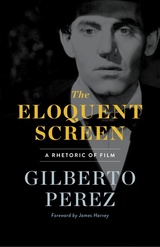 The Eloquent Screen: A Rhetoric of Film
Gilberto Perez
University of Minnesota Press, 2019 A lifetime of cinematic writing culminates in this breathtaking statement on film’s unique ability to move us Cinema is commonly hailed as “the universal language,” but how does it communicate so effortlessly across cultural and linguistic borders? In The Eloquent Screen, influential film critic Gilberto Perez makes a capstone statement on the powerful ways in which film acts on our minds and senses. Drawing on a lifetime’s worth of viewing and re-viewing, Perez invokes a dizzying array of masters past and present—including Chaplin, Ford, Kiarostami, Eisenstein, Malick, Mizoguchi, Haneke, Hitchcock, and Godard—to explore the transaction between filmmaker and audience. He begins by explaining how film fits into the rhetorical tradition of persuasion and argumentation. Next, Perez explores how film embodies the central tropes of rhetoric––metaphor, metonymy, allegory, and synecdoche––and concludes with a thrilling account of cinema’s spectacular capacity to create relationships of identification with its audiences. Although there have been several attempts to develop a poetics of film, there has been no sustained attempt to set forth a rhetoric of film—one that bridges aesthetics and audience. Grasping that challenge, The Eloquent Screen shows how cinema, as the consummate contemporary art form, establishes a thoroughly modern rhetoric in which different points of view are brought into clear focus.
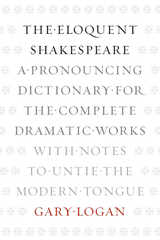 The Eloquent Shakespeare: A Pronouncing Dictionary for the Complete Dramatic Works with Notes to Untie the Modern Tongue
Gary Logan
University of Chicago Press, 2008 An actor’s deepest desire is to be understood. But when asked to pronounce such words as “chanson,” “phantasime,” or “quaestor,” many otherwise unflappable actors can be rendered speechless. The Eloquent Shakespeare aims to untie those tongues and help anyone speak Shakespeare’s language with ease. More than 17,500 entries make it the most comprehensive pronunciation guide to Shakespeare’s words, from the common to the arcane. Each entry is written in the International Phonetic Alphabet (IPA) and represents standard American pronunciations, making this dictionary perfect for North American professionals or non-native speakers of American English. Renowned Shakespearean voice and text coach Gary Logan has spent years teaching Shakespeare’s works to some of the best actors in the world. His book includes proper names, foreign words and phrases, as well as an extensive introduction that covers everything from how to interpret the entries to scansion dynamics. Designed especially for actors, directors, stage managers, and teachers, The Eloquent Shakespeare is a one-of-a-kind resource for performing Shakespeare’s dramatic works.
ELR vol 47 num 1
The University of Chicago Press
University of Chicago Press Journals, 2017
ELR vol 47 num 2
The University of Chicago Press
University of Chicago Press Journals, 2017
ELR vol 47 num 3
The University of Chicago Press
University of Chicago Press Journals, 2017
ELR vol 48 num 1
The University of Chicago Press
University of Chicago Press Journals, 2018
ELR vol 48 num 2
The University of Chicago Press
University of Chicago Press Journals, 2018
ELR vol 48 num 3
The University of Chicago Press
University of Chicago Press Journals, 2018
ELR vol 49 num 1
The University of Chicago Press
University of Chicago Press Journals, 2019
ELR vol 49 num 2
The University of Chicago Press
University of Chicago Press Journals, 2019
ELR vol 49 num 3
The University of Chicago Press
University of Chicago Press Journals, 2019
ELR vol 50 num 1
The University of Chicago Press
University of Chicago Press Journals, 2020
ELR vol 50 num 2
The University of Chicago Press
University of Chicago Press Journals, 2020
ELR vol 50 num 3
The University of Chicago Press
University of Chicago Press Journals, 2020
ELR vol 51 num 1
The University of Chicago Press
University of Chicago Press Journals, 2021
Elsewhere
Doron Rabinovici
Haus Publishing, 2010 Israeli academic Ethan Rosen is a brilliant, opinionated thinker—as is his colleague and rival, Rudi Klausinger, against whom he is pitted in a no-holds-barred competition for the sought-after professorship of cultural studies. So when Rosen condemns an article that he himself wrote, those around them wonder: Is he so confused that he can’t even recognize his own words?
A complex and moving novel about modern Jewish identity, Elsewhere takes aim at a number of sensitive issues, including nationalism, Zionism, collective guilt, the Holocaust, and Israel itself. As heartfelt and surprising as it is hilarious, it pokes fun at the things we care about in order to get at what really matters.
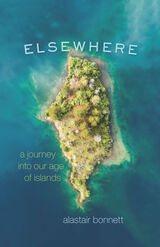 Elsewhere: A Journey into Our Age of Islands
Alastair Bonnett
University of Chicago Press, 2020 Explorer and geographer Alastair Bonnett takes us on a thought-provoking tour of the world’s most fascinating islands, featuring hand-drawn maps, color photos, and stories from his travels.
There are millions of islands on our planet. New islands are being built at an unprecedented rate, for tourism and territorial ambition. Many are also disappearing, besieged by rising sea levels. The story of our world’s islands is one of the great dramas of our time, and it is playing out around the planet—islands are sprouting or being submerged everywhere from the South China Sea to the Atlantic. Elsewhere is the story of this strange and mesmerizing planetary spectacle.
In this book, explorer and geographer Alastair Bonnett takes us on a thought-provoking tour of the world’s most fascinating islands. He traveled the globe to provide a firsthand look at numerous islands, sketching a vivid likeness of each one he visited. From a “crannog,” an ancient artificial island in a Scottish loch, to the militarized artificial islands China is building; from the disappearing islands that remain the home of native Central Americans to the ritzy new islands of Dubai; from Hong Kong to the Isles of Scilly—all have compelling stories to tell. As we journey around the world with Bonnett, he addresses urgent contemporary issues such as climate change, economic inequality, and the changing balance of world power as reflected in the fates of islands. Along the way, we also learn about the many ways islands rise and fall, the long and little-known history of human island-building and the prospect that the inland hills and valleys will one day be archipelagos.
Featuring Bonnett’s charming hand-drawn maps and 33 full-color photos, Elsewhere is a captivating travel book for any armchair adventurer.
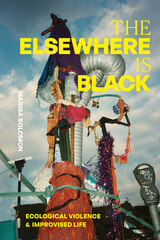 The Elsewhere Is Black: Ecological Violence and Improvised Life
Marisa Solomon
Duke University Press, 2025 In The Elsewhere Is Black, Marisa Solomon examines how waste is a mundane part of poor Black survival and a condition of settler colonial racial capitalism. Tracing the flow of trash and waste across Black spaces, from Brooklyn’s historically Black Bedford-Stuyvesant to the post-plantation towns of Virginia’s Tidewater, Solomon contends that waste infrastructures concentrate environmental risk in an elsewhere that is routinely Black. Solomon emphasizes that ecological violence is a form of racialized heteropatriarchal environmental control that upholds whiteness as a propertied way of life and criminalizes Black survival. As she points to acute sites of toxicity, Solomon theorizes the relationship between the devaluation of land and Black and more-than-human life to reveal how the risks of poisoning, police violence, dispossession, and poverty hold Black life captive. Locating Black survival as a site from which alternative eco-political imaginations spring, she foregrounds how people live and dream amidst waste’s daily accumulation. Solomon opens new ecological horizons to ask: What forms of environmentalism emerge when Black un/freedom has never been distant from waste?
The Elsewhere: On Belonging at a Near Distance
Adam Zachary Newton
University of Wisconsin Press, 2005 "The Elsewhere." Or, midbar-biblical Hebrew for both "wilderness" and "speech." A place of possession and dispossession, loss and nostalgia. But also a place that speaks. Ingeniously using a Talmudic interpretive formula about the disposition of boundaries, Newton explores narratives of "place, flight, border, and beyond." The writers of The Elsewhere are a disparate company of twentieth-century memoirists and fabulists from the Levant (Palestine/Israel, Egypt) and East Central Europe. Together, their texts-cunningly paired so as to speak to one another in mutually revelatory ways-narrate the paradox of the "near distance."
Elsie Clews Parsons: Inventing Modern Life
Desley Deacon
University of Chicago Press, 1997 Elsie Clews Parsons was a pioneering feminist, an eminent anthropologist, and an ardent social critic. In Elsie Clews Parsons, Desley Deacon reconstructs Parsons's efforts to overcome gender biases in both academia and society.
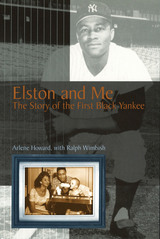 Elston and Me: The Story of the First Black Yankee
Arlene Howard & Ralph Wimbish & Foreword by Yogi Berra & Don Newcombe
University of Missouri Press, 2001 Of all the great ballplayers to wear Yankee pinstripes, Elston Howard was among the proudest. Remarkable temperament and courage made him the Jackie Robinson of baseball's most storied franchise. No Yankee carried himself with more dignity. No Yankee had greater respect for his teammates or love for his wife and family. And no one loved being a Yankee more than Elston Howard.
In Elston and Me, Howard's widow, Arlene, and coauthor Ralph Wimbish recall the life of the first black to play baseball for the New York Yankees. Howard, who played fourteen major-league seasons, was signed by the Yankees in 1950, but the reluctance of the Yankee organization to break the color barrier held Howard back from the major leagues until 1955 when he was twenty-six years old.
By 1961, the year he batted .348 for the Yankees, Elston had become the everyday catcher. Voted the American League's Most Valuable Player in 1963, Howard was a three-time Gold Glove winner, and his fielding average of the same year remains one of the highest among catchers in major-league history.
In 1967, with the Yankee dynasty in decay, Elston was traded to the Boston Red Sox, although Yankee management had promised him that he would finish his career in pinstripes. After contemplating retirement, he moved to Boston late that season and helped the Red Sox win the "Impossible Dream" pennant. After one more season with the Red Sox, he returned to the Yankees as the first black coach in the American League. Howard died at the age of fifty-one without fulfilling his dream of becoming baseball's first black manager.
Beginning with Howard's early years as a St. Louis teenager, the book relates his encounters with racism and his love of baseball. He began his professional career for the legendary Negro League team the Kansas City Monarchs. His three decades with the New York Yankees include numerous anecdotes about fellow Yankee legends such as Mickey Mantle, Whitey Ford, and Yogi Berra. With countless personal moments and never-before- published photographs and clippings from family albums, Elston and Me is the touching story of one of baseball's great players.
Elton's Ecologists: A History of the Bureau of Animal Population
Peter Crowcroft
University of Chicago Press, 1991 From its creation by Charles Elton in 1932 to its demise when he retired in 1967, the Bureau of Animal Population at Oxford was a mecca for ecologists from around the world. Crowcroft provides an anecdotal history of this small research institute that so strongly influenced the development of modern animal ecology.
"[This] is a very good account of the work and personal interactions of a group that played an important part in the development of animal ecology in the period 1930-60."—John Krebs, TREE
Elusion Aforethought: The Life and Writing of Anthony Berkeley Cox
Malcolm J. Turnbull
University of Wisconsin Press, 1996 Elusion Aforethought provides significant new material on the work of crime and detection fiction writer Anthony Berkeley Cox, a popular and prolific English journalist, satirist, and novelist in the period between World Wars I and II. Cox has been called one of the most important and influential of Golden Age detective fiction writers by such authorities as Haycraft, Symons, and Keating, yet he occupies a surprisingly ambivalent position in the history of the crime genre.
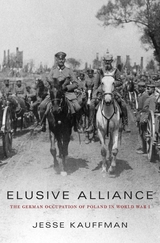 Elusive Alliance: The German Occupation of Poland in World War I
Jesse Kauffman
Harvard University Press, 2015 As World War I dragged on into 1915, German armies along the Western Front settled into stalemate with entrenched British and French forces. But in the East the picture was quite different. The Kaiser’s army routed the Russians, took possession of Polish territory, and attempted to create a Polish satellite state. Elusive Alliance delves into Germany’s three-year occupation of Poland and explains why its ambitious attempt at nation-building failed.
Dubbed the Imperial Government-General of Warsaw, Germany’s occupation regime was headed by veteran Prussian commander Hans Hartwig von Beseler. In his vision for Central Europe, Poland would become Germany’s permanent ally, culturally and politically autonomous but bound to the Fatherland in foreign policy matters. To win Polish support, Beseler spearheaded the creation of new institutions including a Polish-language university in Warsaw, reformed the school system, and established democratically elected municipal governments. For Beseler and other German strategists, a secure Poland was essential to ensuring Central Europe against a threatening tide of nationalism and revolution.
But as Jesse Kauffman shows, Beseler underestimated the resistance to his policies and the growing hostility to occupation as Germany plundered Polish resources to fuel its war effort. By 1918, with the war over, Poles achieved independence. Yet it would not be long before they faced a second, far more brutal German occupation at the hands of the Nazis.
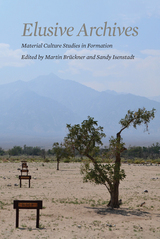 Elusive Archives: Material Culture in Formation
Martin Brückner
University of Delaware Press, 2021 The essays that comprise Elusive Archives raise a common question: how do we study material culture when the objects of study are transient, evanescent, dispersed or subjective? Such things resist the taxonomic protocols that institutions, such as museums and archives, rely on to channel their acquisitions into meaningful collections. What holds these disparate things together here are the questions authors ask of them. Each essay creates by means of its method a provisional collection of things, an elusive archive. Scattered matter then becomes fixed within each author’s analytical framework rather than within the walls of an archive’s reading room or in cases along a museum corridor.
This book follows the ways in which objects may be identified, gathered, arranged, conceptualized and even displayed rather than by “discovering” artifacts in an archive and then asking how they came to be there. The authors approach material culture outside the traditional bounds of learning about the past. Their essays are varied not only in subject matter but also in narrative format and conceptual reach, making the volume accessible and easy to navigate for a quick reference or, if read straight through, build toward a new way to think about material culture.
 The Elusive Empire: Kazan and the Creation of Russia, 1552–1671
Matthew P. Romaniello
University of Wisconsin Press, 2012 In 1552, Muscovite Russia conquered the city of Kazan on the Volga River. It was the first Orthodox Christian victory against Islam since the fall of Constantinople, a turning point that, over the next four years, would complete Moscow’s control over the river. This conquest provided a direct trade route with the Middle East and would transform Muscovy into a global power. As Matthew Romaniello shows, however, learning to manage the conquered lands and peoples would take decades.
Russia did not succeed in empire-building because of its strength, leadership, or even the weakness of its neighbors, Romaniello contends; it succeeded by managing its failures. Faced with the difficulty of assimilating culturally and religiously alien peoples across thousands of miles, the Russian state was forced to compromise in ways that, for a time, permitted local elites of diverse backgrounds to share in governance and to preserve a measure of autonomy. Conscious manipulation of political and religious language proved more vital than sheer military might. For early modern Russia, empire was still elusive—an aspiration to political, economic, and military control challenged by continuing resistance, mismanagement, and tenuous influence over vast expanses of territory.
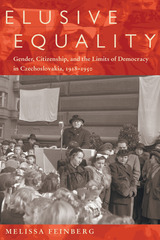 Elusive Equality: Gender, Citizenship, and the Limits of Democracy in Czechoslovokia, 1918-1950
Melissa Feinberg
University of Pittsburgh Press, 2006
When Czechoslovakia became independent in 1918, Czechs embraced democracy, which they saw as particularly suited to their national interests. Politicians enthusiastically supported a constitution that proclaimed all citizens, women as well as men, legally equal. But they soon found themselves split over how to implement this pledge. Some believed democracy required extensive egalitarian legislation. Others contended that any commitment to equality had to bow before other social interests, such as preserving the traditional family.
On the eve of World War II, Czech leaders jettisoned the young republic for an “authoritarian democracy” that firmly placed their nation, and not the individual citizen, at the center of politics. In 1948, they turned to a Communist-led “people's democracy,” which also devalued individual rights.
By examining specific policy issues, including marriage and family law, civil service regulations, citizenship law, and abortion statutes, Elusive Equality demonstrates the relationship between Czechs' ideas about gender roles and their attitudes toward democracy. Gradually, many Czechs became convinced that protecting a traditionally gendered family ideal was more important to their national survival than adhering to constitutionally prescribed standards of equal citizenship. Through extensive original research, Melissa Feinberg assembles a compelling account of how early Czech progress in women's rights, tied to democratic reforms, eventually lost momentum in the face of political transformations and the separation of state and domestic issues. Moreover, Feinberg presents a prism through which our understanding of twentieth-century democracy is deepened, and a cautionary tale for all those who want to make democratic governments work.
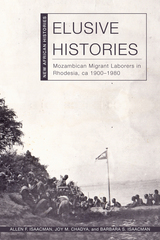 Elusive Histories: Mozambican Migrant Laborers in Rhodesia, ca. 1900-1980
Allen F. Isaacman, Joy M. Chadya, and Barbara S. Isaacman
Ohio University Press, 2025 At the heart of Elusive Histories is a long-neglected story of the clandestine journeys of Mozambican migrant laborers and their families to Rhodesia. Drawing from oral histories, court records, archives, newspapers, and popular magazines, the authors chronicle Mozambican migration, work experiences, and settlement in Rhodesia. Thousands of men, women, and children traveled long distances, often on foot, to reach Rhodesia. Starting with a trickle of workers seeking to avoid chibharo, a Mozambican agricultural forced-labor system, the number of migrants peaked in the 1950s. In 1958, the Rhodesian government passed legislation to bar new Mozambican migrants from entering large cities, redirecting them toward agriculture and mining. When Black Rhodesian laborers began to complain about losing jobs to Mozambicans, the restrictions became an outright ban to prevent further migrants from entering the country. Contrary to previous assumptions, Mozambican labor in Rhodesia was not contract labor derived from bilateral negotiations between the Mozambican colonial and Rhodesian governments. In fact, many Mozambicans who came to work and live in Rhodesia arrived as illegal migrants. The book also demystifies the widely held notion that all foreign migrant workers in Rhodesia who spoke Nyanja were Nyasalanders. Because Nyanja is widely spoken at the confluence of Malawi, Zambia, and Mozambique, many Mozambicans who came to work in Rhodesia were fluent. Despite the national, racial, and cultural differences and the discrimination in job placement, promotion, and housing, Mozambican migrant laborers creatively adapted and made Rhodesia home for the duration of their lives.
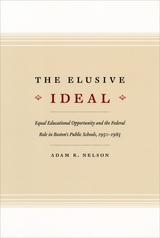 The Elusive Ideal: Equal Educational Opportunity and the Federal Role in Boston's Public Schools, 1950-1985
Adam R. Nelson
University of Chicago Press, 2005 In recent years, federal mandates in education have become the subject of increasing debate. Adam R. Nelson's The Elusive Ideal—a postwar history of federal involvement in the Boston public schools—provides lessons from the past that shed light on the continuing struggles of urban public schools today. This far-reaching analysis examines the persistent failure of educational policy at local, state, and federal levels to equalize educational opportunity for all. Exploring deep-seated tensions between the educational ideals of integration, inclusion, and academic achievement over time, Nelson considers the development and implementation of policies targeted at diverse groups of urban students, including policies related to racial desegregation, bilingual education, special education, school funding, and standardized testing.
An ambitious study that spans more than thirty years and covers all facets of educational policy, from legal battles to tax strategies, The Elusive Ideal provides a model from which future inquiries will proceed. A probing and provocative work of urban history with deep relevance for urban public schools today, Nelson's book reveals why equal educational opportunity remains such an elusive ideal.
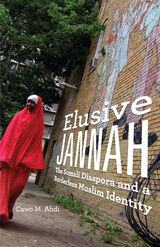 Elusive Jannah: The Somali Diaspora and a Borderless Muslim Identity
Cawo M. Abdi
University of Minnesota Press, 2015 As a Somali working since high school in the United Arab Emirates, Osman considers himself “blessed” to be in a Muslim country, though citizenship, with the security it offers, remains elusive. For Ardo, smuggled out of Somalia to join her husband in South Africa, insecurities are of a more immediate, physical kind, and her economic prospects and legal status are more uncertain. Adam, in the United States—a destination often imagined as an earthly Eden, or jannah, by so many of his compatriots—now sees heaven in a return to Somalia. The stories of these three people are among the many that emerge from mass migration triggered by the political turmoil and civil war plaguing Somalia since 1988. And they are among the diverse collection presented in eloquent detail in Elusive Jannah, a remarkable portrait of the very different experiences of Somali migrants in the UAE, South Africa, and the United States. Somalis in the UAE, a relatively closed Muslim nation, are a minority within a large South Asian population of labor migrants. In South Africa, they are part of a highly racialized and segregated postapartheid society. In the United States they find themselves in a welfare state with its own racial, socioeconomic, and political tensions. A comparison of Somali settlements in these three locations clearly reveals the importance of immigration policies in the migrant experience. Cawo M. Abdi’s nuanced analysis demonstrates that a full understanding of successful migration and integration must go beyond legal, economic, and physical security to encompass a sense of religious, cultural, and social belonging. Her timely book underscores the sociopolitical forces shaping the Somali diaspora, as well as the roles of the nation-state, the war on terror, and globalization in both constraining and enabling their search for citizenship and security.
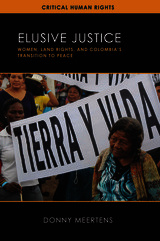 Elusive Justice: Women, Land Rights, and Colombia's Transition to Peace
Donny Meertens
University of Wisconsin Press, 2019 Fifty years of violence perpetrated by guerrillas, paramilitaries, and official armed forces in Colombia displaced more than six million people. In 2011, as part of a larger transitional justice process, the Colombian government approved a law that would restore land rights for those who lost their homes during the conflicts. However, this restitution process lacked appropriate provisions for rural women beyond granting them a formal property title.
Drawing on decades of research, Elusive Justice demonstrates how these women continue to face numerous adverse circumstances, including geographical isolation, encroaching capitalist enterprises, and a dearth of social and institutional support. Donny Meertens contends that women's advocacy organizations must have a prominent role in overseeing these transitional policies in order to create a more just society. By bringing together the underresearched topic of property repayment and the pursuit of gender justice in peacebuilding, these findings have broad significance elsewhere in the world.
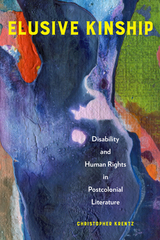 Elusive Kinship: Disability and Human Rights in Postcolonial Literature
Christopher Krentz
Temple University Press, 2022 Characters with disabilities are often overlooked in fiction, but many occupy central places in literature by celebrated authors like Chinua Achebe, Salman Rushdie, J. M. Coetzee, Anita Desai, Jhumpa Lahiri, Edwidge Danticat, and others. These authors deploy disability to do important cultural work, writes Christopher Krentz in his innovative study, Elusive Kinship. Such representations not only relate to the millions of disabled people in the global South, but also make more vivid such issues as the effects of colonialism, global capitalism, racism and sexism, war, and environmental disaster. Krentz is the first to put the fields of postcolonial studies, studies of human rights and literature, and literary disability in conversation with each other in a book-length study. He enhances our appreciation of key texts of Anglophone postcolonial literature of the global South, including Things Fall Apart and Midnight’s Children. In addition, he uncovers the myriad ways fiction gains energy, vitality, and metaphoric force from characters with extraordinary bodies or minds. Depicting injustices faced by characters with disabilities is vital to raising awareness and achieving human rights. Elusive Kinship nudges us toward a fuller understanding of disability worldwide.
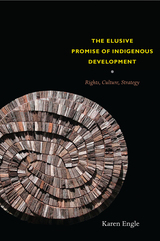 The Elusive Promise of Indigenous Development: Rights, Culture, Strategy
Karen Engle
Duke University Press, 2010 Around the world, indigenous peoples use international law to make claims for heritage, territory, and economic development. Karen Engle traces the history of these claims, considering the prevalence of particular legal frameworks and their costs and benefits for indigenous groups. Her vivid account highlights the dilemmas that accompany each legal strategy, as well as the persistent elusiveness of economic development for indigenous peoples. Focusing primarily on the Americas, Engle describes how cultural rights emerged over self-determination as the dominant framework for indigenous advocacy in the late twentieth century, bringing unfortunate, if unintended, consequences. Conceiving indigenous rights as cultural rights, Engle argues, has largely displaced or deferred many of the economic and political issues that initially motivated much indigenous advocacy. She contends that by asserting static, essentialized notions of indigenous culture, indigenous rights advocates have often made concessions that threaten to exclude many claimants, force others into norms of cultural cohesion, and limit indigenous economic, political, and territorial autonomy. Engle explores one use of the right to culture outside the context of indigenous rights, through a discussion of a 1993 Colombian law granting collective land title to certain Afro-descendant communities. Following the aspirations for and disappointments in this law, Engle cautions advocates for marginalized communities against learning the wrong lessons from the recent struggles of indigenous peoples at the international level.
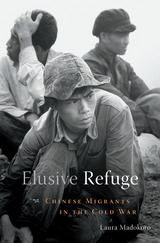 Elusive Refuge: Chinese Migrants in the Cold War
Laura Madokoro
Harvard University Press, 2016 The 1949 Chinese Communist Revolution is a subject of inexhaustible historical interest, but the plight of millions of Chinese who fled China during this tumultuous period has been largely forgotten. Elusive Refuge recovers the history of China’s twentieth-century refugees. Focusing on humanitarian efforts to find new homes for Chinese displaced by civil strife, Laura Madokoro points out a constellation of factors—entrenched bigotry in countries originally settled by white Europeans, the spread of human rights ideals, and the geopolitical pressures of the Cold War—which coalesced to shape domestic and international refugee policies that still hold sway today.
Although the United States, Canada, Australia, New Zealand, and South Africa were home to sizeable Asian communities, Chinese migrants were a perpetual target of legislation designed to exclude them. In the wake of the 1949 Revolution, government officials and the broader public of these countries questioned whether Chinese refugees were true victims of persecution or opportunistic economic migrants undeserving of entry. It fell to NGOs such as the Lutheran World Federation and the World Council of Churches to publicize the quandary of the vast community of Chinese who had become stranded in Hong Kong.
These humanitarian organizations achieved some key victories in convincing Western governments to admit Chinese refugees. Anticommunist sentiment also played a role in easing restrictions. But only the plight of Southeast Asians fleeing the Vietnam War finally convinced the United States and other countries to adopt a policy of granting permanent residence to significant numbers of refugees from Asia.
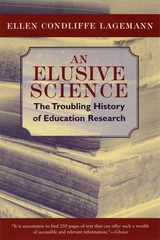 An Elusive Science: The Troubling History of Education Research
Ellen Condliffe Lagemann
University of Chicago Press, 2000 Since its beginnings at the start of the 20th century, educational scholarship has been a marginal field, criticized by public policy makers and relegated to the fringes of academe. An Elusive Science explains why, providing a critical history of the traditions, conflicts, and institutions that have shaped the study of education over the past century.
"[C]andid and incisive. . . . A stark yet enlightening look at American education."—Library Journal
"[A]n account of the search, over the past hundred or so years, to try and discover how educational research might provide reliable prescriptions for the improvement of education. Through extensive use of contemporary reference material, [Lagemann] shows that the search for ways of producing high-quality research has been, in effect, a search for secure disciplinary foundations."—Dylan William, Times Higher Education Supplement
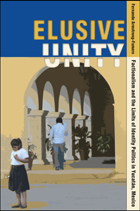 Elusive Unity: Factionalism and the Limits of Identity Politics in Yucatán, Mexico
Fernando Armstrong-Fumero
University Press of Colorado, 2013 In Elusive Unity, Armstrong-Fumero examines early twentieth-century peasant politics and twenty-first-century indigenous politics in the rural Oriente region of Yucatán.
The rural inhabitants of this region have had some of their most important dealings with their nation’s government as self-identified “peasants” and “Maya.” Using ethnography, oral history, and archival research, Armstrong-Fumero shows how the same body of narrative tropes has defined the local experience of twentieth-century agrarianism and twenty-first-century multiculturalism.
Through these recycled narratives, contemporary multicultural politics have also inherited some ambiguities that were built into its agrarian predecessor. Specifically, local experiences of peasant and indigenous politics are shaped by tensions between the vernacular language of identity and the intense factionalism that often defines the social organization of rural communities. This significant contribution will be of interest to historians, anthropologists, and political scientists studying Latin America and the Maya.
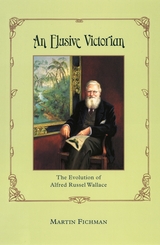 An Elusive Victorian: The Evolution of Alfred Russel Wallace
Martin Fichman
University of Chicago Press, 2003 Codiscoverer of the theory of evolution by natural selection, Alfred Russel Wallace should be recognized as one of the titans of Victorian science. Instead he has long been relegated to a secondary place behind Darwin. Worse, many scholars have overlooked or even mocked his significant contributions to other aspects of Victorian culture. With An Elusive Victorian, Martin Fichman provides the first comprehensive analytical study of Wallace's life and controversial intellectual career.
Fichman examines not only Wallace's scientific work as an evolutionary theorist and field naturalist but also his philosophical concerns, his involvement with theism, and his commitment to land nationalization and other sociopolitical reforms such as women's rights. As Fichman shows, Wallace worked throughout his life to integrate these humanistic and scientific interests. His goal: the development of an evolutionary cosmology, a unified vision of humanity's place in nature and society that he hoped would ensure the dignity of all individuals.
To reveal the many aspects of this compelling figure, Fichman not only reexamines Wallace's published works, but also probes the contents of his lesser known writings, unpublished correspondence, and copious annotations in books from his personal library. Rather than consider Wallace's science as distinct from his sociopolitical commitments, An Elusive Victorian assumes a mutually beneficial relationship between the two, one which shaped Wallace into one of the most memorable characters of his time. Fully situating Wallace's wide-ranging work in its historical and cultural context, Fichman's innovative and insightful account will interest historians of science, religion, and Victorian culture as well as biologists.
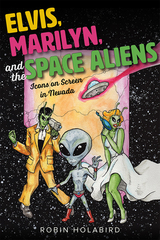 Elvis, Marilyn, and the Space Aliens: Icons on Screen in Nevada
Robin Holabird
University of Nevada Press, 2017 Elvis Presley, Marilyn Monroe, and space aliens like the Transformers share a surprising connection along with James Bond, Indiana Jones, and Rocky Balboa. These beloved icons played active roles in movie and television projects set in the state of Nevada. Long time state film commissioner and movie reviewer Holabird explores the blending of icons and Nevada, along with her personal experiences of watching movies, talking with famous people, and showing off a diverse range of stunning and iconic locations like Las Vegas, Reno, Lake Tahoe, and Area 51. Holabird shows how Nevada’s flash, flair, and fostering of the forbidden provided magic for singers, sexpots, and strange creatures from other worlds. She also gives readers an insider’s look into moviemaking in Nevada by drawing on her extensive experience as a film commissioner. This is a unique take on film history and culture, and Holabird explores eighteen film genres populated by one-of-a-kind characters with ties to Nevada. Along with being a film history of the state of Nevada written by a consummate insider, the book is a fun mixture of research, personal experiences, and analysis about how Nevada became the location of choice for a broad spectrum of well-known films and characters.
 Elvis’s Army: Cold War GIs and the Atomic Battlefield
Brian McAllister Linn
Harvard University Press, 2016 When the U.S. Army drafted Elvis Presley in 1958, it quickly set about transforming the King of Rock and Roll from a rebellious teen idol into a clean-cut GI. Trading in his gold-trimmed jacket for standard-issue fatigues, Elvis became a model soldier in an army facing the unprecedented challenge of building a fighting force for the Atomic Age.
In an era that threatened Soviet-American thermonuclear annihilation, the army declared it could limit atomic warfare to the battlefield. It not only adopted a radically new way of fighting but also revamped its equipment, organization, concepts, and training practices. From massive garrisons in Germany and Korea to nuclear tests to portable atomic weapons, the army reinvented itself. Its revolution in warfare required an equal revolution in personnel: the new army needed young officers and soldiers who were highly motivated, well trained, and technologically adept. Drafting Elvis demonstrated that even this icon of youth culture was not too cool to wear the army’s uniform.
The army of the 1950s was America’s most racially and economically egalitarian institution, providing millions with education, technical skills, athletics, and other opportunities. With the cooperation of both the army and the media, military service became a common theme in television, music, and movies, and part of this generation’s identity. Brian Linn traces the origins, evolution, and ultimate failure of the army’s attempt to transform itself for atomic warfare, revealing not only the army’s vital role in creating Cold War America but also the experiences of its forgotten soldiers.
 e-mail trouble: love and addiction @ the matrix
By S. Paige Baty
University of Texas Press, 1999 "This is about a society of isolates who all communicate with one another from terminal sites. This is about being disembodied, distanced, distinct, and that sort of boundary-thing. It is not about being present. It is not about being there. It is not about a shared history, or a shared meal, or a shared story, or any kind of mutuality. It is about contact between virtual strangers. . . . It happens when you feel that you are so alone that you need anybody to talk to—anybody at all—because you believe that your connections have failed you. This kind of connection leaves you cold and dead inside, because it lacks history and a language of belonging." In this daring, postmodern autobiography, S. Paige Baty recounts her search for love and community on the Internet. Taking Jack Kerouac's On the Road as a point of departure, Baty describes both an actual road trip to meet the object of an e-mail romance and the cyber-search for connection that draws so many people into the matrix of the Internet. Writing in a bold, experimental style that freely mixes e-mails, poems, fragments of quotations, and puns into expository text, she convincingly links e-mail trouble with "female trouble" in the displacement of embodied love and accountable human relationships to opaque screens and alienated identities. Her book stands as a vivid feminist critique of our culture's love affair with technology and its dehumanizing effect on personal relationships.
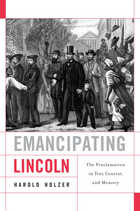 Emancipating Lincoln: The Proclamation in Text, Context, and Memory
Harold Holzer
Harvard University Press, 2012 Emancipating Lincoln seeks a new approach to the Emancipation Proclamation, a foundational text of American liberty that in recent years has been subject to woeful misinterpretation. These seventeen hundred words are Lincoln’s most important piece of writing, responsible both for his being hailed as the Great Emancipator and for his being pilloried by those who consider his once-radical effort at emancipation insufficient and half-hearted.
Harold Holzer, an award-winning Lincoln scholar, invites us to examine the impact of Lincoln’s momentous announcement at the moment of its creation, and then as its meaning has changed over time. Using neglected original sources, Holzer uncovers Lincoln’s very modern manipulation of the media—from his promulgation of disinformation to the ways he variously withheld, leaked, and promoted the Proclamation—in order to make his society-altering announcement palatable to America. Examining his agonizing revisions, we learn why a peerless prose writer executed what he regarded as his “greatest act” in leaden language. Turning from word to image, we see the complex responses in American sculpture, painting, and illustration across the past century and a half, as artists sought to criticize, lionize, and profit from Lincoln’s endeavor.
Holzer shows the faults in applying our own standards to Lincoln’s efforts, but also demonstrates how Lincoln’s obfuscations made it nearly impossible to discern his true motives. As we approach the 150th anniversary of the Proclamation, this concise volume is a vivid depiction of the painfully slow march of all Americans—white and black, leaders and constituents—toward freedom.
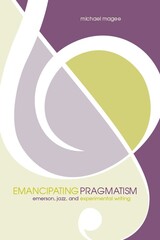 Emancipating Pragmatism: Emerson, Jazz, and Experimental Writing
Michael Magee
University of Alabama Press, 2004 A radical rereading of Emerson that posits African- American culture, literature, and jazz as the very continuation and embodiment of pragmatic thought and democratic tradition
Emancipating Pragmatism is a radical rereading of Emerson that posits African- American culture, literature, and jazz as the embodiment of pragmatic thought and democratic tradition. It traces Emerson's philosophical legacy through the 19th and 20th centuries to discover how Emersonian thought continues to inform issues of race, aesthetics, and poetic discourse.
Emerson’s pragmatism derives from his abolitionism, Michael Magee argues, and any pragmatic thought that aspires toward democracy cannot ignore and must reckon with its racial roots. Magee looks at the ties between pragmatism and African-American culture as they manifest themselves in key texts and movements, such as William Carlos Williams’s poetry; Ralph Ellison’s discourse in Invisible Man and Juneteenth and his essays on jazz; the poetic works of Robert Creeley, Amiri Baraka, and Frank O'Hara; as well as the “new jazz” being forged at clubs like The Five Spot in New York.
Ultimately, Magee calls into question traditional maps of pragmatist lineage and ties pragmatism to the avant-garde American tradition.
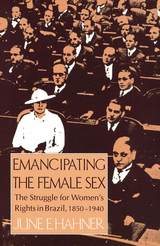 Emancipating the Female Sex: The Struggle for Women's Rights in Brazil, 1850–1940
June E. Hahner
Duke University Press, 1990 June E. Hahner’s pioneering work, Emancipating the Female Sex, offers the first comprehensive history of the struggle for women’s rights in Brazil. Based on previously undiscovered primary sources and fifteen years of research, Hahner’s study provides long-overdue recognition of the place of women in Latin American history.
Hahner traces the history of Brazilian women’s fight for emancipation from its earliest manifestations in the mid-nineteenth century to the successful conclusion of the suffrage campaign in the 1930s. Drawing on interviews with surviving Brazilian suffragists and contemporary feminists as well as manuscripts and printed documents, Hahner explores the strategies and ideological positions of Brazilian feminists. In focusing on urban upper- and middle-class women, from whose ranks the leadership for change arose, she examines the relationship between feminism and social change in Brazil’s complex and highly stratified society.
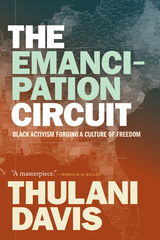 The Emancipation Circuit: Black Activism Forging a Culture of Freedom
Thulani Davis
Duke University Press, 2022 In The Emancipation Circuit Thulani Davis provides a sweeping rethinking of Reconstruction by tracing how the four million people newly freed from bondage created political organizations and connections that mobilized communities across the South. Drawing on the practices of community they developed while enslaved, freedpeople built new settlements and created a network of circuits through which they imagined, enacted, and defended freedom. This interdisciplinary history shows that these circuits linked rural and urban organizations, labor struggles, and political culture with news, strategies, education, and mutual aid. Mapping the emancipation circuits, Davis shows the geography of ideas of freedom---circulating on shipping routes, via army maneuvers, and with itinerant activists---that became the basis for the first mass Black political movement for equal citizenship in the United States. In this work, she reconfigures understandings of the evolution of southern Black political agendas while outlining the origins of the enduring Black freedom struggle from the Jim Crow era to the present.
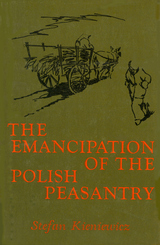 Emancipation of the Polish Peasantry
Stefan Kieniewicz
University of Chicago Press, 1969 Captured in this study are the complexity and fascination of one hundred and fifty years of Polish political, cultural, and socioeconmic history. The author traces the course of peasant emancipation in Poland from its beginnings during the Enlightenment to its aftermath in the cultural awakening of the peasantry during the half century prior to World War I and shows how the peasant question played a vital role in the struggle for independence in partitioned Poland.
The book synthesizes, for the first time in any language, the work of leading Polish historians during the present century. It presents a clear analysis of the disintegration of the economic system based on serfdom and compulsory labor prevalent in feudal Poland and traces the emergence of modern capitalist conditions, including wage labor and independent property rights.
Also analyzed is the role of foreign goverments in the emacipation process. The freeing of the serfs took place during a period when all or most of the country was under the rule of Russia, Prussia, or Austria. Although emancipation was due primarily to economic forces withing Poland, it was hastened by peasant resistance and the national struggle for political independence led by Polish patriots who demanded far-reaching social reforms.
This comprehensive study provides valuable information not only to those with a particular interest in Poland but also to scholars concerned with the parallel problems in Russia andother Eastern Eurpean countries, to specialists in agrarian history, and to students of Eastern European history who lack adequate reading materials in English.
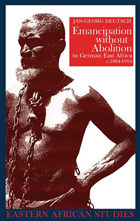 Emancipation without Abolition in German East Africa, c. 1884–1914
Jan-Georg Deutsch
Ohio University Press, 2006 This study examines the complex history of slavery in East Africa, focusing on the area that came under German colonial rule. In contrast to the policy pursued at the time by other colonial powers in Africa, the German authorities did not legally abolish slavery in their colonial territories. However, despite government efforts to keep the institution of slavery alive, it significantly declined in Tanganyika in the period concerned. The book highlights the crucial role played by the slaves in the process of emancipation. Author Jan-Georg Deutsch explores the rise of slavery in Tanganyika in the second half of the nineteenth century, when the region became more fully integrated into the world economy. An analysis of German colonial policy reveals that the authorities believed that abolition should be avoided at all costs since it would undermine the power and prosperity of the local slave-owning elites whose effective collaboration was thought to be indispensable to the functioning of colonial rule. The author demonstrates how slaves by their own initiative brought the ”evil institution“ to an end, making the best of limited choices and opportunities available to them. The study, of interest to historians of East Africa, makes a contribution to the more general debate about the demise of slavery on the continent.
 Emancipation without Equality: Pan-African Activism and the Global Color Line
Thomas E. Smith
University of Massachusetts Press, 2018 At the Pan–African Conference in London in 1900, W. E. B. Du Bois famously prophesied that the problem of the twentieth century would be the global color line, the elevation of “whiteness” that created a racially divided world. While Pan-Africanism recognized the global nature of the color line in this period, Thomas E. Smith argues that it also pushed against it, advocating for what Du Bois called "opportunities and privileges of modern civilization" to open up to people of all colors.
Covering a period roughly bookended by two international forums, the 1884–1885 Berlin Conference and the 1911 Universal Races Congress, Emancipation without Equality chronicles how activists of African descent fought globally for equal treatment and access to rights associated with post-emancipated citizenship. While Euro-American leaders created a standard to guide the course of imperialism at the Berlin Conference, the proceedings of the Universal Races Congress demonstrated that Pan-Africanism had become a visible part of a growing, global, anti-imperialist protest.
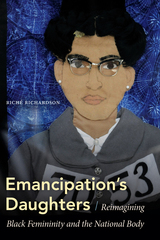 Emancipation's Daughters: Reimagining Black Femininity and the National Body
Riché Richardson
Duke University Press, 2021 In Emancipation's Daughters, Riché Richardson examines iconic black women leaders who have contested racial stereotypes and constructed new national narratives of black womanhood in the United States. Drawing on literary texts and cultural representations, Richardson shows how five emblematic black women—Mary McLeod Bethune, Rosa Parks, Condoleezza Rice, Michelle Obama, and Beyoncé—have challenged white-centered definitions of American identity. By using the rhetoric of motherhood and focusing on families and children, these leaders have defied racist images of black women, such as the mammy or the welfare queen, and rewritten scripts of femininity designed to exclude black women from civic participation. Richardson shows that these women's status as national icons was central to reconstructing black womanhood in ways that moved beyond dominant stereotypes. However, these formulations are often premised on heteronormativity and exclude black queer and trans women. Throughout Emancipation's Daughters, Richardson reveals new possibilities for inclusive models of blackness, national femininity, and democracy.
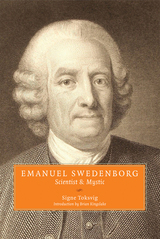 Emanuel Swedenborg: Scientist and Mystic
SIGNE TOKSVIG
Swedenborg Foundation Publishers, 1983
This classic biography of Emanuel Swedenborg (1688–1772), first published in 1948, gives us a sharp, witty, personal insight into the life of the Swedish scientist and theologian.
Though not a Swedenborgian herself, and somewhat skeptical of Swedenborg’s claims to divine revelation, Toksvig praises Swedenborg’s genius as both a thinker and a man of faith: “Swedenborg in his later phase has as great treasure to bestow as many of those millionaires of the spirit we call mystics, even if one reads him strictly from an ethical point of view. And, apart from an interest in distinctions between good and evil—not an unnecessary interest at the present time, one would think—Swedenborg in his life and works can, if one takes a little trouble to understand him, open travel horizons for us far exceeding all others for beauty and strangeness.”
An introduction by the Reverend Brian Kingslake, added to a 1983 edition, provides a Swedenborgian perspective and retrospective on a work that remains a fascinating, informative look at Swedenborg’s world.
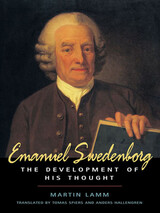 Emanuel Swedenborg: The Development of His Thought
MARTIN LAMM
Swedenborg Foundation Publishers, 2000
Available for the first time in English, Martin Lamm's work on the evolution of Emanuel Swedenborg's (1688-1772) philosphical system has stood as the standard humanist interpretation of Swedenborg's writings. First published in Swedish in 1915, the book has influenced generations of European scholars. His detailed investigation of the philosophical and religious background of Swedenborgian thought is an illuminating inquiry into the mystery of how Swedenborg was transformed from a scientist into a seer.
Lamm demonstrates that there is a logical and consisten line of thought developed from Swedenborg's earliest childhood experiences to his most mature theological statements. Backed by scholarly evidence, Lamm shows that Swedenborg's scientifically based worldview was not changed by his religious revelations -- rather, his visions completed and corroborated the picture.
Martin Lamm's analysis of the genesis of Swedenborgian philosophy is a masterful and lively portrait of one of history's most remarkable thinkers.
Emanuel Swedenborg: Visionary Savant in the Age of Reason
ERNST BENZ
Swedenborg Foundation Publishers, 2002 Originally written more than fifty years ago by eminent scholar Ernst Benz, this volume stands as one of the most comprehensive biographies of Emanuel Swedenborg (1688–1772) ever published. Benz examines Swedenborg’s life through the lens of the intellectual atmosphere of the eighteenth century. Growing up at a time when the classical view of the world was being challenged by the new philosophers and scientists of the Enlightenment, Swedenborg was deeply immersed both in the religious teachings of the Lutheran church and the explorations of rational science. His quest for understanding eventually led to his spiritual awakening and the unique insights that continue to inspire seekers and thinkers today. Now available for the first time in paperback, Nicholas Goodrick-Clarke’s eminently readable translation shines a new light on the Swedish seer.
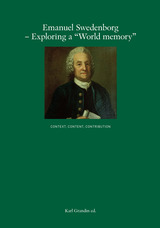 Emanuel Swedenborg--Exploring a "World Memory": Context, Content, Contribution
Karl Grandin
Swedenborg Foundation Publishers, 2013 In 2010, a scholarly conference on Emanuel Swedenborg’s ideas and influence was held at the Center for the History of Science at the Royal Swedish Academy of Sciences in Stockholm. The conference was a celebration a recently completed digital catalog of the academy’s Swedenborg archive, which in 2006 was designated as part of UNESCO’s World Memory program. This was the first time that an academic conference on Swedenborg was hosted by a non-Swedenborgian institution.
The conference attracted presenters from all over the world, including some top scholars. Papers were divided into three categories. “Content” describes Swedenborg’s thought, from his use of spheres in his scientific writings to his views on sexuality and marriage to analyses of his theological writings. “Context” explores his times, putting Swedenborg in the context of eighteenth-century philosophy and looking at the organization of the earliest Swedenborgian church. “Contribution” looks at Swedenborg’s influence on philosophy and the arts, from Ralph Waldo Emerson and Czeslaw Milocz to Elizabeth Barrett Browning and William James.
These papers present a rare insight into Swedenborg. Although only a limited number of attendees were invited to the conference, now the research is available to all.
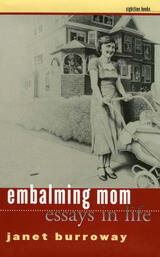 Embalming Mom: Essays in Life
Janet Burroway
University of Iowa Press, 2004 Janet Burroway followed in the footsteps of Sylvia Plath. Like Plath, she was an earlyMademoiselle guest editor in New York, an Ivy League and Cambridge student, an aspiring poet-playwright-novelist in the period before feminism existed, a woman who struggled with her generation's conflicting demands of work and love. Unlike Plath, Janet Burroway survived. In sixteen essays of wit, rage, and reconciliation, Embalming Mom chronicles loss and renaissance in a life that reaches from Florida to Arizona across to England and home again. Burroway brilliantly weaves her way through the dangers of daily life—divorcing her first husband, raising two boys, establishing a new life, scattering her mother's ashes and sorting the meager possessions of her father. Each new danger and challenge highlight the tenacious will of the body and spirit to heal. “Ordinary life is more dangerous than war because nobody survives,” Burroway contemplates in the essay “Danger and Domesticity,” yet each of her meditations reminds us that it's our daily rituals and trials that truly keep us alive.
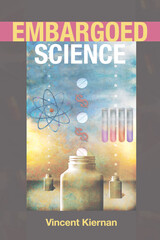 Embargoed Science
Vincent Kiernan
University of Illinois Press, 2006 The popular notion of a lone scientist privately toiling long hours in a laboratory, striking upon a great discovery, and announcing it to the world is a romanticized fiction. Vincent Kiernan's Embargoed Science reveals the true process behind science news: an elite few scholarly journals control press coverage through a mechanism known as an embargo. The journals distribute advance copies of their articles to hundreds and sometimes thousands of journalists around the world, on the condition that journalists agree not to report their stories until a common time, several days later. When the embargo lifts, airwaves and newspaper pages are flooded with stories based on the journal's latest issue. In addition to divulging the realities behind this collusive practice, Kiernan offers an unprecedented exploration of the embargo's impact on public and academic knowledge of science and medical issues. He surveys twenty five daily U.S. newspapers and relates his in-depth interviews with reporters to examine the inner workings of the embargo and how it structures our understanding of news about science. Kiernan ultimately argues that this system fosters "pack journalism" and creates an unhealthy shield against journalistic competition. The result is the uncritical reporting of science and medical news according to the dictates of a few key sources.
 Embassies and Illusions: Dutch and Portuguese Envoys to K'ang-hsi
John E. Wills Jr.
Harvard University Press, 1984 Embassies and Illusions shows how peculiar circumstances in the early Ch'ing dynasty led to the application of the inherited routines of the tribute embassy to relations with Europeans. Chinese records of those embassies strengthened the illusion, persisting into the Opium War period, that the tribute system was relevant to the conduct of Sino-European relations.
From archival and printed sources in seven languages, John Wills traces the progress of four embassies—two Dutch, two Portuguese—to the court of K'ang-hsi. He constructs vivid pictures of the ambassadors and their staffs, their difficulties in their ports of arrival, the long journeys to Peking, the ceremonies at the courts, the gifts exchanged, the influence of Jesuits resident in Peking, and, of special interest, the young Emperor in the early years of his reign. Contexts of Ch'ing court and provincial politics and of Dutch and Portuguese relations with China are clearly described.
 Embattled Bodies, Embattled Places: War in Pre-Columbian Mesoamerica and the Andes
Andrew K. Scherer
Harvard University Press With spears and arrows, atl-atls and slings, the people of the New World fought to defend themselves against European invasion and conquest. Over a century of scholarship on warfare has substantially enhanced our understanding of the scope and scale of violent conflict in Pre-Columbian America. Yet we still struggle to understand the nuances of indigenous warfare and its importance for native politics and society. This volume sheds new light on the nature of war in Mesoamerica and the Andes. Relying on methodological and theoretical developments in anthropological archaeology, bioarchaeology, and ethnohistory, contributors highlight the particularities of warfare in indigenous societies and examine the commonalities of warfare in cross-cultural perspective. Their essays focus on place and the body, as they explore the importance of captive-taking, sacrifice, performance, and political history in the conduct of war. Observers have debated whether the indigenous peoples of the Americas were distinctly noble or frightfully savage in their way of war. This volume shows that such polarized positions are unfounded. By focusing on the nuances of indigenous violent conflict, the contributors demonstrate that war in the Americas was much like war elsewhere in the ancient and modern world: strategic, political, bloody, socially productive, yet terribly destructive.
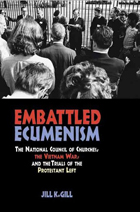 Embattled Ecumenism: The National Council of Churches, the Vietnam War, and the Trials of the Protestant Left
Jill K. Gill
Northern Illinois University Press, 2011
The Vietnam War and its polarizing era challenged, splintered, and changed The National Council of the Churches of Christ in the U.S.A. (NCC), which was motivated by its ecumenical Christian vision to oppose that war and unify people. The NCC’s efforts on the war exposed its strengths and imploded its weaknesses in ways instructive for religious institutions that bring their faith into politics. Embattled Ecumenism explores the ecumenical vision, anti-Vietnam War efforts, and legacy of the NCC. Gill’s monumental study serves as a window into the mainline Protestant
manner of engaging political issues at a unique time of national crisis and religious transformation. In vibrant prose, Gill illuminates an ecumenical institution, vision, and movement that has been largely misrepresented by the religious right, dismissed by the secular left, misunderstood by
laity, and ignored by scholars outside of ecumenical circles.
At a time when the majority of scholarly work is committed to looking at the religious right, Gill’s groundbreaking study of the Protestant Left is a welcome addition. Embattled Ecumenism will appeal to scholars of U.S. religion, politics, and culture, as well as historians of evangelicalism and general readers interested in U.S. history and religion.
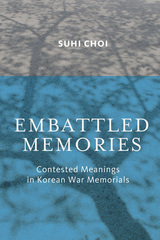 Embattled Memories: Contested Meanings in Korean War Memorials
Suhi Choi
University of Nevada Press, 2014 The Korean War has been called the “forgotten war,” not as studied as World War II or Vietnam. Choi examines the collective memory of the Korean War through five discrete memory sites in the United States and South Korea, including the PBS documentary Battle for Korea, the Korean War Memorial in Salt Lake City, and the statue of General Douglas MacArthur in Incheon, South Korea. She contends that these sites are not static; rather, they are active places where countermemories of the war clash with the official state-sanctioned remembrance. Through lively and compelling analysis of these memory sites, which include two differing accounts of the No Gun Ri massacre\--contemporaneous journalism and oral histories by survivors\--Choi shows diverse narratives of the Korean War competing for dominance in acts of remembering. Embattled Memories is an important interdisciplinary work in two fields, memory studies and public history, from an understudied perspective, that of witnesses to the Korean War.
 The Embattled Vote in America: From the Founding to the Present
Allan J. Lichtman
Harvard University Press, 2020 “A sweeping look at the history of voting rights in the U.S.”—Vox
Who has the right to vote? And who benefits from exclusion?
For most of American history, the right to vote has been a privilege restricted by wealth, sex, race, and literacy. Economic qualifications were finally eliminated in the nineteenth century, but the ideal of a white man’s republic persisted long after that. Women and racial minorities had to fight hard and creatively to secure their voice, but voter identification laws, registration requirements, and voter purges continue to prevent millions of American citizens from voting.
An award-winning historian and voting right activist, Allan Lichtman gives us the history behind today’s headlines. He shows that political gerrymandering and outrageous attempts at voter suppression have been a fixture of American democracy—but so have efforts to fight back and ensure that every citizen’s voice be heard.
“Lichtman uses history to contextualize the fix we’re in today. Each party gropes for advantage by fiddling with the franchise… Growing outrage, he thinks, could ignite demands for change. With luck, this fine history might just help to fan the flame.”
—New York Times Book Review
“The great value of Lichtman’s book is the way it puts today’s right-wing voter suppression efforts in their historical setting. He identifies the current push as the third crackdown on African-American voting rights in our history.”
—Michael Tomasky, New York Review of Books
Embedded Generation
Nick Jenkins
The Institution of Engineering and Technology, 2000 The use of combined heat and power (CHP) plants and renewable energy sources reduces the amount of greenhouse gases released into the atmosphere and helps to alleviate the consequent climate change. The policies of many governments suggest that the proportion of electrical energy produced by these sources will increase dramatically over the next two decades. Unlike traditional generating units, these new types of power plant are usually 'embedded' in the distribution system or 'dispersed' around the network. As a result, conventional design and operating practices are no longer applicable; for example, power protection principles have to be revised and complex economic questions need to be resolved.
Embedded Mechatronics System Design for Uncertain Environments: Linux®-based, Rasbpian®, ARDUINO® and MATLAB® xPC Target Approaches
Cheng Siong Chin
The Institution of Engineering and Technology, 2019 Industrial machines, automobiles, airplanes, robots, and machines are among the myriad possible hosts of embedded systems. The author researches robotic vehicles and remote operated vehicles (ROVs), especially Underwater Robotic Vehicles (URVs), used for a wide range of applications such as exploring oceans, monitoring environments, and supporting operations in extreme environments.
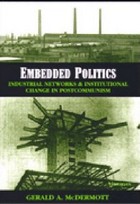 Embedded Politics: Industrial Networks and Institutional Change in Postcommunism
Gerald A. McDermott
University of Michigan Press, 2003 Embedded Politics offers a unique framework for analyzing the impact of past industrial networks on the way postcommunist societies build new institutions to govern the restructuring of their economies. Drawing on a detailed analysis of communist Czechoslovakia and contemporary Czech industries and banks, Gerald A. McDermott argues that restructuring is best advanced through the creation of deliberative or participatory forms of governance that encourages public and private actors to share information and take risks. Further, he contends that institutional and organizational changes are intertwined and that experimental processes are shaped by how governments delegate power to local public and private actors and monitor them.
Using comparative case analysis of several manufacturing sectors, Embedded Politics accounts for change and continuity in the formation of new economic governance institutions in the Czech Republic. It analytically links the macropolitics of state policy with the micropolitics of industrial restructuring. Thus the book advances an alternative approach for the comparative study of institutional change and industrial adjustment.
As a historical and contemporary analysis of Czech firms and public institutions, this book will command the attention of students of postcommunist reforms, privatization, and political-economic transitions in general. But also given its interdisciplinary approach and detailed empirical analysis of policy-making and firm behavior, Embedded Politics is a must read for scholars of politics, economics, sociology, political economy, business organization, and public policy.
Gerald A. McDermott is Assistant Professor of Management in The Wharton School of Management at The University of Pennsylvania. His research applies recent advances in comparative political economy and industrial organization, including theories of social networks, historical institutionalism, and incomplete markets to analyze issues of economic governance, firm creation, and industrial restructuring in advanced and newly industrialized countries. As evidenced by Embedded Politics, his current focus is on problems of institutional and organizational learning in the formation of meso-level governance institutions in emerging market and postsocialist economies.
McDermott also works as Senior Research Fellow at the IAE Escuela de Direccion y Negocios at Universidad Austral in Buenos Aires, and he has served as Project Coordinator at the Inter-American Development Bank. He has consulted for the Finance, Private Sector, and Infrastructure Division at the World Bank and advised the Deputy Foreign Minister of the Czech Republic. In addition he has published many papers and book chapters on entrepreneurship, privatization, institutions, and networks in Central Europe and Latin America.
The Embers and the Stars
Erazim Kohák
University of Chicago Press, 1987 "It is hard to put this profound book into a category. Despite the author's criticisms of Thoreau, it is more like Walden than any other book I have read. . . . The book makes great strides toward bringing the best insights from medieval philosophy and from contemporary environmental ethics together. Anyone interested in both of these areas must read this book."—Daniel A. Dombrowski, The Thomist
"Those who share Kohák's concern to understand nature as other than a mere resource or matter in motion will find his temporally oriented interpretation of nature instructive. It is here in particular that Kohák turns moments of experience to account philosophically, turning what we habitually overlook or avoid into an opportunity and basis for self-knowledge. This is an impassioned attempt to see the vital order of nature and the moral order of our humanity as one."—Ethics
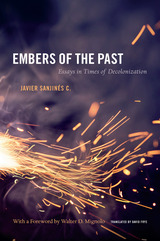 Embers of the Past: Essays in Times of Decolonization
Javier Sanjinés C.
Duke University Press, 2013 Embers of the Past is a powerful critique of historicism and modernity. Javier Sanjinés C. analyzes the conflict between the cultures and movements of indigenous peoples and attention to the modern nation-state in its contemporary Latin American manifestations. He contends that indigenous movements have introduced doubt into the linear course of modernity, reopening the gap between the symbolic and the real. Addressing this rupture, Sanjines argues that scholars must rethink their temporal categories. Toward that end, he engages with recent events in Latin America, particularly in Bolivia, and with Latin American intellectuals, as well as European thinkers disenchanted with modernity. Sanjinés dissects the concepts of the homogeneous nation and linear time, and insists on the need to reclaim the indigenous subjectivities still labeled "premodern" and excluded from the production, distribution, and organization of knowledge.
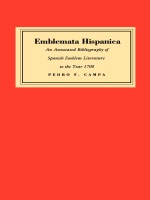 Emblemata Hispanica: An Annotated Bibliography of Spanish Emblem Literature to the Year 1700
Pedro F. Campa
Duke University Press, 1990 Emblem books—books containing pictorial representations whose symbolic meaning is expressed in words—were produced in great quantities and in numerous languages during the sixteenth and seventeenth centuries. Because literary critics and art historians increasingly recognize the importance of the emblem in Renaissance and Baroque studies, this book answers the need for a bibliography listing the locations of all known emblem books in Spanish, as well as those translated into Spanish, written by Spaniards in other languages, and polyglot editions that contain a Spanish text.
Covered in this bibliography are all emblem books published from the beginning to the end of the Spanish Golden Age, as well as a wide range of secondary sources on relevant subjects, among them mythography, paradoxography, numismatics, fetes, funerals, proverbs, apothegms, antiquarianism, collecting, and pertinent studies in art history and architecture. Providing call numbers for library locations, information on facsimile reprints, and microform editions, the work is extensively indexed—by date and place of publication, by printers and booksellers, by authors and artists, and by dedicatees, as well as by subject.
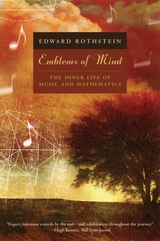 Emblems of Mind: The Inner Life of Music and Mathematics
Edward Rothstein
University of Chicago Press, 2006 One is a science, the other an art; one useful, the other seemingly decorative, but mathematics and music share common origins in cult and mystery and have been linked throughout history. Emblems of Mind is Edward Rothstein’s classic exploration of their profound similarities, a journey into their “inner life.” Along the way, Rothstein explains how mathematics makes sense of space, how music tells a story, how theories are constructed, how melody is shaped. He invokes the poetry of Wordsworth, the anthropology of Lévi-Strauss, the imagery of Plato, and the philosophy of Kant. Math and music, Rothstein shows, apply comparable methods as they create their abstractions, display similar concerns with ratio and proportion, and depend on metaphors and analogies to create their meanings. Ultimately, Rothstein argues, they reveal the ways in which we come to understand the world. They are images of the mind at work and play; indeed, they are emblems of Mind itself.
Jacques Barzun called this book “splendid.” Martin Gardner said it was “beautifully written, marvelous and entertaining.” It will provoke all serious readers to think in new ways about the grand patterns in art and life.
“Lovely, wistful. . . . Rothstein is a wonderful guide to the architecture of musical space, its tensions and relations, its resonances and proportions. . . . His account of what is going on in the music is unfailingly felicitous.”—New Yorker
“Provocative and exciting. . . . Rothstein writes this book as a foreign correspondent, sending dispatches from a remote and mysterious locale as a guide for the intellectually adventurous. The remarkable fact about his work is not that it is profound, as much of the writing is, but that it is so accessible.”—Christian Science Monitor
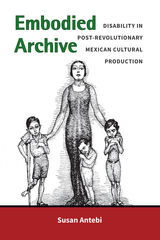 Embodied Archive: Disability in Post-Revolutionary Mexican Cultural Production
Susan Antebi
University of Michigan Press, 2021 Embodied Archive focuses on perceptions of disability and racial difference in Mexico’s early post-revolutionary period, from the 1920s to the 1940s. In this period, Mexican state-sponsored institutions charged with the education and health of the population sought to strengthen and improve the future of the nation, and to forge a more racially homogeneous sense of collective identity and history. Influenced by regional and global movements in eugenics and hygiene, Mexican educators, writers, physicians, and statesmen argued for the widespread physical and cognitive testing and categorization of schoolchildren, so as to produce an accurate and complete picture of “the Mexican child,” and to carefully monitor and control forms of unwanted difference, including disability and racialized characteristics. Differences were not generally marked for eradication—as would be the case in eugenics movements in the US, Canada, and parts of Europe—but instead represented possible influences from a historically distant or immediate reproductive past, or served as warnings of potential danger haunting individual or collective futures. Weaving between the historical context of Mexico’s post-revolutionary period and our present-day world, Embodied Archive approaches literary and archival documents that include anti-alcohol and hygiene campaigns; projects in school architecture and psychopedagogy; biotypological studies of urban schoolchildren and indigenous populations; and literary approaches to futuristic utopias or violent pasts. It focuses in particular on the way disability is represented indirectly through factors that may have caused it in the past or may cause it in the future, or through perceptions and measurements that cannot fully capture it. In engaging with these narratives, the book proposes an archival encounter, a witnessing of past injustices and their implications for the disability of our present and future.
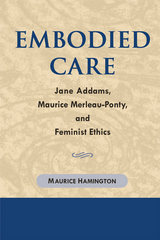 Embodied Care: Jane Addams, Maurice Merleau-Ponty, and Feminist Ethics
Maurice Hamington
University of Illinois Press, 2004 Until now, ethicists have said little about the body, limiting their comments on it to remarks made in passing or, at best, devoting a chapter to the subject. Embodied Care is the first work to argue for the body's centrality to care ethics, doing so by analyzing our corporeality at the phenomenological level. It develops the idea that our bodies are central to our morality, paying particular attention to the ways we come to care for one another.
Hamington's argues that human bodies are "built to care"; as a result, embodiment must be recognized as a central factor in moral consideration. He takes the reader on an exciting journey from modern care ethics to Merleau-Ponty's philosophy of the body and then to Jane Addams's social activism and philosophy. The ideas in Embodied Care do not lead to yet another competing theory of morality; rather, they progress through theory and case studies to suggest that no theory of morality can be complete without a full consideration of the body.
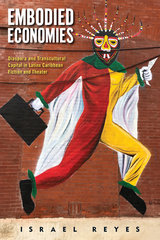 Embodied Economies: Diaspora and Transcultural Capital in Latinx Caribbean Fiction and Theater
Israel Reyes
Rutgers University Press, 2022 How do upwardly mobile Latinx Caribbean migrants leverage their cultural heritage to buy into the American Dream? In the neoliberal economy of the United States, the discourse of white nationalism compels upwardly mobile immigrants to trade in their ties to ethnic and linguistic communities to assimilate to the dominant culture. For Latinx Caribbean immigrants, exiles, and refugees this means abandoning Spanish, rejecting forms of communal inter-dependence, and adopting white, middle-class forms of embodiment to mitigate any ethnic and racial identity markers that might hinder their upwardly mobile trajectories. This transactional process of acquiring and trading in various kinds of material and embodied practices across traditions is a phenomenon author Israel Reyes terms “transcultural capital,” and it is this process he explores in the contemporary fiction and theater of the Latinx Caribbean diaspora.
In chapters that compare works by Lin-Manuel Miranda, Nilo Cruz, Edwin Sánchez, Ángel Lozada, Rita Indiana Hernández, Dolores Prida, and Mayra Santos Febres, Reyes examines the contradictions of transcultural capital, its potential to establish networks of support in Latinx enclaves, and the risks it poses for reproducing the inequities of power and privilege that have always been at the heart of the American Dream. Embodied Economies shares new perspectives through its comparison of works written in both English and Spanish, and the literary voices that emerge from the US and the Hispanic Caribbean.
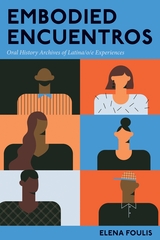 Embodied Encuentros: Oral History Archives of Latina/o/e Experiences
Elena Foulis
Ohio State University Press, 2026 In Embodied Encuentros, Elena Foulis offers a practical guide for completing ethical fieldwork in Latina/o/e communities, emphasizing equitable and culturally sustaining practices for gathering oral histories. In her critical decolonial model, Foulis centers the agency of the people within these communities while considering the diversity and complexity of their experiences. In doing so, she advocates for the importance of building oral history archives that challenge our understandings of Latina/o/e peoples.
Foulis provides a conceptual framework for building on community knowledge that considers language, cultural practices, gender, and race. She suggests ways to involve students in ethical research; collect evolving oral histories; employ a language justice approach that acknowledges linguistic oppression, translanguaging, and bilingualism as essential aspects of this community; and consider the importance of digital archives for the creation of multimedia projects that foster community pláticas. Grounded in both theoretical approaches and a feminist ethics praxis, Embodied Encuentros ultimately outlines an important model for doing collaborative, ethical research—not only within Latina/o/e communities but within other minoritized communities as well.
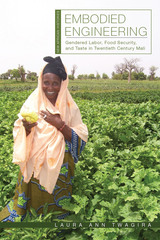 Embodied Engineering: Gendered Labor, Food Security, and Taste in Twentieth-Century Mali
Laura Ann Twagira
Ohio University Press, 2021 Foregrounding African women’s ingenuity and labor, this pioneering case study shows how women in rural Mali have used technology to ensure food security through the colonial period, environmental crises, and postcolonial rule. By advocating for an understanding of rural Malian women as engineers, Laura Ann Twagira rejects the persistent image of African women as subjects without technological knowledge or access and instead reveals a hidden history about gender, development, and improvisation. In so doing, she also significantly expands the scope of African science and technology studies. Using the Office du Niger agricultural project as a case study, Twagira argues that women used modest technologies (such as a mortar and pestle or metal pots) and organized female labor to create, maintain, and reengineer a complex and highly adaptive food production system. While women often incorporated labor-saving technologies into their work routines, they did not view their own physical labor as the problem it is so often framed to be in development narratives. Rather, women’s embodied techniques and knowledge were central to their ability to transform a development project centered on export production into an environmental resource that addressed local taste and consumption needs.
 Embodied Experiences of Making in Early Modern Europe: Bodies, Gender, and Material Culture
Sarah A. Bendall
Amsterdam University Press, 2025 Processes of making in early modern Europe were both tacit and embodied. Whether making pottery, food, or textiles, the processes of manual production rested on an intersensory connection between mind, body, and object. This volume focuses on the body of the maker to ask how processes of making, experimenting, experiencing, and reconstructing illuminate early modern assumptions and understandings around manual labour and material life. Answers can be gleaned through both recapturing past skills and knowledge of making and by reconstructing past bodies and bodily experiences using recreative and experimental approaches.
In drawing attention to the body, this collection underlines the importance of embodied knowledge and sensory experiences associated with the making practices of historically marginalised groups, such as craftspeople, women, domestic servants, and those who were colonised, to confront biases in the written archive. The history of making is found not only in technological and economic innovations which drove ‘progress’ but also in the hands, minds, and creations of makers themselves.
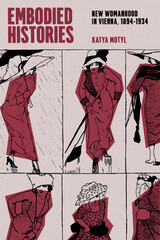 Embodied Histories: New Womanhood in Vienna, 1894–1934
Katya Motyl
University of Chicago Press, 2024 Explores the emergence of a new womanhood in turn-of-the-century Vienna.
In Embodied Histories, historian Katya Motyl explores the everyday acts of defiance that formed the basis for new, unconventional forms of womanhood in early twentieth-century Vienna. The figures Motyl brings back to life defied gender conformity, dressed in new ways, behaved brashly, and expressed themselves freely, overturning assumptions about what it meant to exist as a woman.
Motyl delves into how these women inhabited and reshaped the urban landscape of Vienna, an increasingly modern, cosmopolitan city. Specifically, she focuses on the ways that easily overlooked quotidian practices such as loitering outside cafés and wandering through city streets helped create novel conceptions of gender. Exploring the emergence of a new womanhood, Embodied Histories presents a new account of how gender, the body, and the city merge with and transform each other, showing how our modes of being are radically intertwined with the spaces we inhabit.
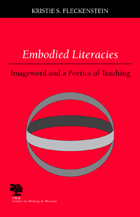 Embodied Literacies: Imageword and a Poetics of Teaching
Kristie S. Fleckenstein
Southern Illinois University Press, 2003 Embodied Literacies: Imageword and a Poetics of Teaching is a response to calls to enlarge the purview of literacy to include imagery in its many modalities and various facets. Kristie S. Fleckenstein asserts that all meaning, linguistic or otherwise, is a result of the transaction between image and word. She implements the concept of imageword—a mutually constitutive fusion of image and word—to reassess language arts education and promote a double vision of reading and writing. Utilizing an accessible fourfold structure, she then applies the concept to the classroom, reconfiguring what teachers do when they teach, how they teach, what they teach with, and how they teach ethically. Fleckenstein does not discount the importance of text in the quest for literacy. Instead, she places the language arts classroom and teacher at the juncture of image and word to examine the ways imagery enables and disables the teaching of and the act of reading and writing. Learning results from the double play of language and image, she argues. Helping teachers and students dissolve the boundaries between text and image, the volume outlines how to see reading and writing as something more than words and language and to disestablish our definitions of literacy as wholly linguistic. Embodied Literacies: Imageword and a Poetics of Teaching comes at a critical time in our cultural history. Echoing the opinion that postmodernity is a product of imagery rather than textuality, Fleckenstein argues that we must evolve new literacies when we live in a culture saturated by images on computer screens, televisions, even billboards. Decisively and clearly, she demonstrates the importance of incorporating imagery—which is inextricably linked to our psychological, social, and textual lives—into our epistemologies and literacy teaching.
Embodied Memory: Theatre Of George Tabon
Anat Feinberg
University of Iowa Press, 1999
Making use of invaluable archival material, Feinberg's biographical account is followed by a study of Tabori's experimental theatre work. As did prominent avant-gardists such as Grotowski or Chaikin, Tabori sought to open up new vistas in an otherwise mainstream theatre system. Feinberg pays special attention to Tabori's theatrical innovations, most movingly found in his Holocaust plays. There Feinberg shows the ways in which Tabori's theatre becomes a locus of remembrance (Gedächtnisort) and of unique, engaging memory-work (Erinnerungsarbeit).
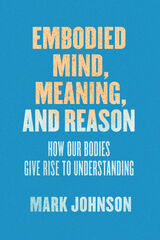 Embodied Mind, Meaning, and Reason: How Our Bodies Give Rise to Understanding
Mark Johnson
University of Chicago Press, 2017 Mark Johnson is one of the great thinkers of our time on how the body shapes the mind. This book brings together a selection of essays from the past two decades that build a powerful argument that any scientifically and philosophically satisfactory view of mind and thought must ultimately explain how bodily perception and action give rise to cognition, meaning, language, action, and values.
A brief account of Johnson’s own intellectual journey, through which we track some of the most important discoveries in the field over the past forty years, sets the stage. Subsequent chapters set out Johnson’s important role in embodied cognition theory, including his cofounding (with George Lakoff) of conceptual metaphor theory and, later, their theory of bodily structures and processes that underlie all meaning, conceptualization, and reasoning. A detailed account of how meaning arises from our physical engagement with our environments provides the basis for a nondualistic, nonreductive view of mind that he sees as most congruous with the latest cognitive science. A concluding section explores the implications of our embodiment for our understanding of knowledge, reason, and truth. The resulting book will be essential for all philosophers dealing with mind, thought, and language.
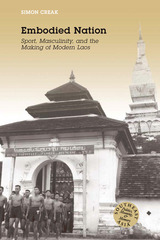 Embodied Nation: Sport, Masculinity, and the Making of Modern Laos
Simon Creak
University of Hawaii Press, 2015 Viewing the country’s extraordinary transitions—from French colonialism to royalist nationalism to revolutionary socialism to the modern development state—through the lens of physical culture, Simon Creak’s incisive narrative illuminates a nation that has no reputation in sport and is typically viewed, even from within, as a country of cheerful but lazy people. Creak argues that sport and related physical practices—including physical education, gymnastics, and military training—have shaped a national consciousness. Combining cultural and intellectual history, Creak draws on a creative array of Lao and French sources from previously unexplored archives, newspapers, and magazines, and from ethnographic writing, war photography, and cartoons. More than an “imagined community” or “geobody,” he shows that Laos was also a “body at work,” making substantive theoretical contributions not only to Southeast Asian studies and history, but to the study of the physical culture, nationalism, masculinity, and modernity in all modern societies.
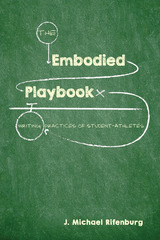 The Embodied Playbook: Writing Practices of Student-Athletes
J. Michael Rifenburg
Utah State University Press, 2018 The Embodied Playbook discovers a new approach to understanding student literacy in a surprising place: the university athletics department. Through analysis of a yearlong case study of the men’s basketball team at the University of North Georgia, J. Michael Rifenburg shows that a deeper and more refined understanding of how humans learn through physical action can help writing instructors reach a greater range of students. Drawing from research on embodiment theory, the nature and function of background knowledge, jazz improvisation, and other unexpected domains, The Embodied Playbook examines a valuable but unexplored form of literacy: the form used by student-athletes when learning and using scripted plays. All students’ extracurricular prior knowledge is vital for the work they undertake in the classroom, and student-athletes understand the strengths and constraints of written text much as they understand the text of game plays: through embodying text and performing it in a competitive space. The book focuses on three questions: What are plays and what do they do? How do student-athletes learn plays? How can teachers of composition and rhetoric better connect with student-athletes? The Embodied Playbook reveals the literacy of the body as a rich and untapped resource for writing instruction. Given the numbers of students who are involved in athletics, whether intramural, community-related, or extracurricular, Rifenburg’s conclusions hold important implications not only for how we define literacy but also for how writing programs can serve all of their students most effectively.
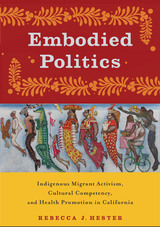 Embodied Politics: Indigenous Migrant Activism, Cultural Competency, and Health Promotion in California
Rebecca J. Hester
Rutgers University Press, 2022 Embodied Politics illuminates the influential force of public health promotion in indigenous migrant communities by examining the Indigenous Health Project (IHP), a culturally and linguistically competent initiative that uses health workshops, health messages, and social programs to mitigate the structural vulnerability of Oaxacan migrants in California. Embodied Politics reconstructs how this initiative came to exist and describes how it operates. At the same time, it points out the conflicts, resistances, and counter-acts that emerge through the IHP’s attempts to guide the health behaviors and practices of Triqui and Mixteco migrants. Arguing for a structurally competent approach to migrant health, Embodied Politics shows how efforts to promote indigenous health may actually reinforce the same social and political economic forces, namely structural racism and neoliberalism, that are undermining the health of indigenous Oaxacans in Mexico and the United States.
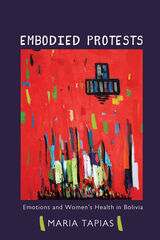 Embodied Protests: Emotions and Women's Health in Bolivia
Maria Tapias
University of Illinois Press, 2015 Embodied Protests examines how Bolivia's hesitant courtship with globalization manifested in the visceral and emotional diseases that afflicted many Bolivian women. Drawing on case studies conducted among market- and working-class women in the provincial town of Punata, Maria Tapias examines how headaches and debilidad, so-called normal bouts of infant diarrhea, and the malaise oppressing whole communities were symptomatic of profound social suffering. She approaches the narratives of distress caused by poverty, domestic violence, and the failure of social networks as constituting the knowledge that shaped their understandings of well-being. At the crux of Tapias's definitive analysis is the idea that individual health perceptions, actions, and practices cannot be separated from local cultural narratives or from global and economic forces. Evocative and compassionate, Embodied Protests gives voice to the human costs of the ongoing neoliberal experiment.
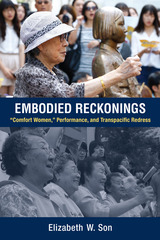 Embodied Reckonings: “Comfort Women,” Performance, and Transpacific Redress
Elizabeth W. Son
University of Michigan Press, 2018 Embodied Reckonings examines the political and cultural aspects of contemporary performances that have grappled with the history of the “comfort women,” the Japanese military’s euphemism for the sexual enslavement of girls and young women—mostly Korean—in the years before and during World War II. Long silent, in the early 1990s these women and their supporters initiated varied performance practices—protests, tribunals, theater, and memorial-building projects—to demand justice for those affected by state-sponsored acts of violence. The book provides a critical framework for understanding how actions designed to bring about redress can move from the political and legal aspects of this concept to its cultural and social possibilities.
Based on extensive archival and ethnographic research, the study argues for the central role of performance in how Korean survivors, activists, and artists have redressed the histories—and erasures—of this sexual violence. Merging cultural studies and performance theory with a transnational, feminist analysis, the book illuminates the actions of ordinary people, thus offering ways of reconceptualizing legal and political understandings of redress that tend to concentrate on institutionalized forms of state-based remediation.
Embodied Resistance: Challenging the Norms, Breaking the Rules
Chris Bobel
Vanderbilt University Press, 2011 Embodied Resistance engages the rich and complex range of society's contemporary "body outlaws"—people from many social locations who violate norms about the private, the repellent, or the forbidden. This collection ventures beyond the conventional focus on the "disciplined body" and instead, examines conformity from the perspective of resisters. By balancing accessibly written original ethnographic research with personal narratives, Embodied Resistance provides a window into the everyday lives of those who defy or violate socially constructed body rules and conventions.
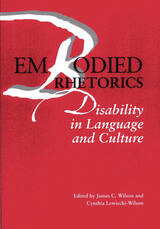 Embodied Rhetorics: Disability in Language and Culture
Edited by James C. Wilson and Cynthia Lewiecki-Wilson
Southern Illinois University Press, 2001 Presenting thirteen essays, editors James C. Wilson and Cynthia Lewiecki-Wilson unite the fields of disability studies and rhetoric to examine connections between disability, education, language, and cultural practices. Bringing together theoretical and analytical perspectives from rhetorical studies and disability studies, these essays extend both the field of rhetoric and the newer field of disability studies. The contributors span a range of academic fields including English, education, history, and sociology. Several contributors are themselves disabled or have disabled family members. While some essays included in this volume analyze the ways that representations of disability construct identity and attitudes toward the disabled, other essays use disability as a critical modality to rethink economic theory, educational practices, and everyday interactions. Among the disabilities discussed within these contexts are various physical disabilities, mental illness, learning disabilities, deafness, blindness, and diseases such as multiple sclerosis and AIDS.
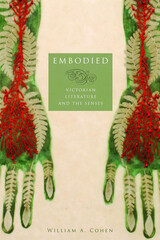 Embodied: Victorian Literature and the Senses
William A. Cohen
University of Minnesota Press, 2008 Making sense of the body in Victorian literature What does it mean to be human? British writers in the Victorian period found a surprising answer to this question. What is human, they discovered, is nothing more or less than the human body itself. In literature of the period, as well as in scientific writing and journalism, the notion of an interior human essence came to be identified with the material existence of the body. The organs of sensory perception were understood as crucial routes of exchange between the interior and the external worlds. Anatomizing Victorian ideas of the human, William A. Cohen considers the meaning of sensory encounters in works by writers including Charles Dickens, Charlotte Brontë, Anthony Trollope, Thomas Hardy, and Gerard Manley Hopkins. Rather than regarding the bodily exterior as the primary location in which identity categories—such as gender, sexuality, race, and disability—are expressed, he focuses on the interior experience of sensation, whereby these politics come to be felt. In these elegant engagements with literary works, cultural history, and critical theory, Cohen advances a phenomenological approach to embodiment, proposing that we encounter the world not through our minds or souls but through our senses.
 The Embodied Word: Female Spiritualities, Contested Orthodoxies, and English Religious Cultures, 1350-1700
Nancy Bradley Warren
University of Notre Dame Press, 2010
InThe Embodied Word: Female Spiritualities, Contested Orthodoxies, and English Religious Cultures, 1350-1700, Nancy Bradley Warren expands on the topic of female spirituality, first explored in her book Women of God and Arms, to encompass broad issues of religion, gender, and historical periodization. Through her analyses of the variety of ways in which medieval spirituality was deliberately and actively carried forward to the early modern period, Warren underscores both continuities and revisions that challenge conventional distinctions between medieval and early modern culture.
The early modern writings of Julian of Norwich are an illustrative starting point for Warren's challenge to established views of English religious cultures. In a single chapter, Warren follows the textual and devotional practices of Julian as they influence two English Benedictine nuns in exile, and then Grace Mildmay, a seventeenth-century Protestant gentry woman, "to shed light on the ways in which individual encounters of the divine, especially gendered bodily encounters expressed textually, signify for others both personally and socio-historically." In subsequent chapters, Warren discusses St. Birgitta of Sweden's imitatio Christi in the context of the importance of Spain and Spanish women in shaping a distinctive form of early modern Englishness strongly aligned with medieval religious culture; juxtaposes the fifteenth-century mystic Margery Kempe with the life and writings of Anna Trapnel, a seventeenth-century Baptist; and treats Catherine of Siena together with the Protestant Anne Askew and Lollard and Recusant women. In the final chapters she focuses on the interplay of gender and textuality in women's textual representations of themselves and in works written by men who used the traditions of female spirituality in the service of competing orthodoxies.
"In five interwoven chapters, Nancy Bradley Warren expands upon her distinguished previous work to explore the enduring symbolic and political importance of women's religious models in the 'secular' as well as the 'religious' realms. By highlighting the interrelation of religious and political themes in a diverse group of women's lives and writings, Warren brilliantly demonstrates how women shaped cultural connections between England and the Continent during these tumultuous centuries." --Nicole Rice, St. John's University
"A pioneering cross-period, cross-confessional, transnational study of religious Englishwomen and their extraordinary physical-textual corpus. Highly recommended." --David Wallace, University of Pennsylvania
 Embodiment of a Nation: Human Form in American Places
Cecelia Tichi
Harvard University Press, 2001 From Harriet Beecher Stowe's image of the Mississippi's "bosom" to Henry David Thoreau's Cape Cod as "the bared and bended arm of Massachusetts," the U.S. environment has been recurrently represented in terms of the human body. Exploring such instances of embodiment, Cecelia Tichi exposes the historically varied and often contrary geomorphic expression of a national paradigm. Environmental history as cultural studies, her book plumbs the deep and peculiarly American bond between nationalism, the environment, and the human body.
Tichi disputes the United States' reputation of being "nature's nation." U.S. citizens have screened out nature effectively by projecting the bodies of U.S. citizens upon nature. She pursues this idea by pairing Mount Rushmore with Walden Pond as competing efforts to locate the head of the American body in nature; Yellowstone's Old Faithful with the Moon as complementary embodiments of the American frontier; and Hot Springs, Arkansas, with Love Canal as contrasting sites of the identification of women and water. A major contribution to current discussions of gender and nature, her book also demonstrates the intellectual power of wedding environmental studies to the social history of the human body.
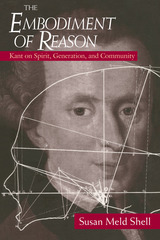 The Embodiment of Reason: Kant on Spirit, Generation, and Community
Susan Meld Shell
University of Chicago Press, 1996 Commentators on the work of Immanuel Kant have long held that his later "critical" writings are a radical rejection of his earlier, less celebrated efforts. In this pathbreaking book, Susan Shell demonstrates not only the developmental unity of Kant's individual writings, but also the unity of his work and life experience.
Shell argues that the central animating issues of Kant's lifework concerned the perplexing relation of spirit to body. Through an exacting analysis of individual writings, Shell maps the philosophical contours of Kant's early intellectual struggles and their relation to his more mature thought. The paradox of mind in matter and the tensions it generates—between freedom and determinacy, independence and community, ideal and real—are shown to inform the whole of his work. Shell's fresh, penetrating analysis of the precritical works will surely catapult them to new prominence in Kant studies.
Shell's critique goes further to consider the context of contemporary intellectual life. She explores the fascinating realm of Kant's sexual and medical idiosyncracies, linking them to the primary concerns of his critical philosophy. She develops a sure-to-be controversial treatment of the connection between Kant's philosophy and his chronic hypochondria, and illuminates previously unforeseen connections in a remarkable convergence of life and thought, with important theoretical and practical implications for modern times.
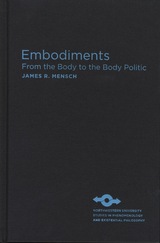 Embodiments: From the Body to the Body Politic
James R. Mensch
Northwestern University Press, 2009 How does the body politic reflect the nature of human embodiment? To pursue this question in a new and productive way, James Mensch employs a methodology consistent with the fact of our embodiment; he uses Merleau-Ponty’s concept of "intertwining"—the presence of one’s self in the world and of the world in one’s self—to understand the ideas that define political life.
Mensch begins his inquiry by developing a philosophical anthropology based on this concept. He then applies the results of his investigation to the relations of power, authority, freedom, and sovereignty in public life. This involves confronting a line of interpretation, stretching from Hobbes to Agamben, which sees violence as both initiating and preserving the social contract. To contest this interpretation, Mensch argues against its presupposition, which is to equate freedom with sovereignty over others. He does so by understanding political freedom in terms of embodiment—in particular, in terms of the finitude and interdependence that our embodiment entails. Freedom, conceived in these terms, is understood as the gift of others. As a function of our dependence on others, it cannot exist apart from them. To show how public space and civil society presuppose this interdependence is the singular accomplishment of Embodiments. It accomplishes a phenomenological grounding for a new type of political philosophy.
Embodiments of Evil: Gog and Magog: Interdisciplinary Studies of the "Other" in Literature & Internet Texts
Edited by A. A. Seyed-Gohrab, F. Doufikar-Aerts, and S. McGlinn
Leiden University Press, 2011 Gog and Magog, as archetypes of evil, have dwelt in our consciousness since their threatening appearance in the Bible and Quran. Maps, literature and texts ranging from Medieval Europe, the Byzantine and Arab world, in Berber, Persian and Indonesian traditions, to contemporary internet texts: all use these imaginary monstrous creatures. The figures are constantly reinterpreted as the enemies of order change. Gog and Magog have been represented with dog heads, snake tongues. On the covers of contemporary Arab apocalyptic literature they may be giants or half-humans.
This volume Embodiments of Evil: Gog and Magog reveals in eight essays the images of the ‘Other’ in genres ranging from contemporary folk religion on the internet to the rich literary heritage of Alexander romances.
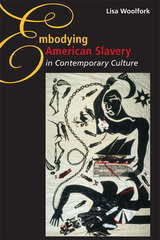 Embodying American Slavery in Contemporary Culture
Lisa Woolfork
University of Illinois Press, 2008 This study explores contemporary novels, films, performances, and reenactments that depict American slavery and its traumatic effects by invoking a time-travel paradigm to produce a representational strategy of "bodily epistemology." Disrupting the prevailing view of traumatic knowledge that claims that traumatic events are irretrievable and accessible only through oblique reference, these novels and films circumvent the notion of indirect reference by depicting a replaying of the past, forcing present-day protagonists to witness and participate in traumatic histories that for them are neither dead nor past. Lisa Woolfork cogently analyzes how these works deploy a representational strategy that challenges the divide between past and present, imparting to their recreations of American slavery a physical and emotional energy to counter America's apathetic or amnesiac attitude about the trauma of the slave past.
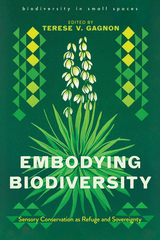 Embodying Biodiversity: Sensory Conservation as Refuge and Sovereignty
Terese V. Gagnon
University of Arizona Press, 2024 Harnessing a myriad of methodologies and research spanning multiple continents, this volume delves into the power of everyday forms of biodiversity conservation, motivated by sensory and embodied engagement with plants. Through an array of interdisciplinary contributions, the authors argue that the vast majority of biodiversity conservation worldwide is carried out not by large-scale, hierarchical initiatives but by ordinary people who cultivate sensory-motivated, place-based bonds with plants.
Acknowledging the monumental role of everyday champions in tending biodiversity, the contributors write that this caretaking is crucial to countering ecological harm and global injustice stemming from colonial violence and racial capitalism.
Contributors
Mike Anastario
Ally Ang
Antonia Barreau
Julián Caviedes
Chen Chen
Evelyn Flores
Terese V. Gagnon
José Tomás Ibarra
Fred L. Joiner
Gary Nabhan
Virginia D. Nazarea
Shannon A. Novak
Valentina Peveri
Emily Ramsey
Yasuaki Sato
Justin Simpson
David E. Sutton
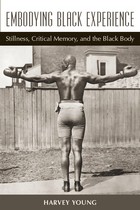 Embodying Black Experience: Stillness, Critical Memory, and the Black Body
Harvey Young
University of Michigan Press, 2010 "Young's linkage between critical race theory, historical inquiry, and performance studies is a necessary intersection. Innovative, creative, and provocative."
---Davarian Baldwin, Paul E. Raether Distinguished Professor of American Studies, Trinity College In 1901, George Ward, a lynching victim, was attacked, murdered, and dismembered by a mob of white men, women, and children. As his lifeless body burned in a fire, enterprising white youth cut off his toes and, later, his fingers and sold them as souvenirs. In Embodying Black Experience, Harvey Young masterfully blends biography, archival history, performance theory, and phenomenology to relay the experiences of black men and women who, like Ward, were profoundly affected by the spectacular intrusion of racial violence within their lives. Looking back over the past two hundred years---from the exhibition of boxer Tom Molineaux and Saartjie Baartman (the "Hottentot Venus") in 1810 to twenty-first century experiences of racial profiling and incarceration---Young chronicles a set of black experiences, or what he calls, "phenomenal blackness," that developed not only from the experience of abuse but also from a variety of performances of resistance that were devised to respond to the highly predictable and anticipated arrival of racial violence within a person's lifetime. Embodying Black Experience pinpoints selected artistic and athletic performances---photography, boxing, theater/performance art, and museum display---as portals through which to gain access to the lived experiences of a variety of individuals. The photographs of Joseph Zealy, Richard Roberts, and Walker Evans; the boxing performances of Jack Johnson, Joe Louis, and Muhammad Ali; the plays of Suzan-Lori Parks, Robbie McCauley, and Dael Orlandersmith; and the tragic performances of Bootjack McDaniels and James Cameron offer insight into the lives of black folk across two centuries and the ways that black artists, performers, and athletes challenged the racist (and racializing) assumptions of the societies in which they lived. Blending humanistic and social science perspectives, Embodying Black Experience explains the ways in which societal ideas of "the black body," an imagined myth of blackness, get projected across the bodies of actual black folk and, in turn, render them targets of abuse. However, the emphasis on the performances of select artists and athletes also spotlights moments of resistance and, indeed, strength within these most harrowing settings. Harvey Young is Associate Professor of Theatre, Performance Studies, and Radio/Television/Film at Northwestern University. A volume in the series Theater: Theory/Text/Performance
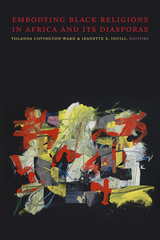 Embodying Black Religions in Africa and Its Diasporas
Yolanda Covington-Ward and Jeanette S. Jouili, editors
Duke University Press, 2021 The contributors to Embodying Black Religions in Africa and Its Diasporas investigate the complex intersections between the body, religious expression, and the construction and transformation of social relationships and political and economic power. Among other topics, the essays examine the dynamics of religious and racial identity among Brazilian Neo-Pentecostals; the significance of cloth coverings in Islamic practice in northern Nigeria; the ethics of socially engaged hip-hop lyrics by Black Muslim artists in Britain; ritual dance performances among Mama Tchamba devotees in Togo; and how Ifá practitioners from Mexico, Colombia, Venezuela, Trinidad, and the United States join together in a shared spiritual ethnicity. From possession and spirit-induced trembling to dance, the contributors outline how embodied religious practices are central to expressing and shaping interiority and spiritual lives, national and ethnic belonging, ways of knowing and techniques of healing, and sexual and gender politics. In this way, the body is a crucial site of religiously motivated social action for people of African descent.
Contributors. Rachel Cantave, Youssef Carter, N. Fadeke Castor, Yolanda Covington-Ward, Casey Golomski, Elyan Jeanine Hill, Nathanael J. Homewood, Jeanette S. Jouili, Bertin M. Louis Jr., Camee Maddox-Wingfield, Aaron Montoya, Jacob K. Olupona, Elisha P. Renne
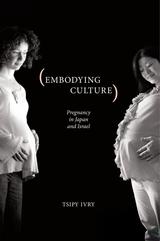 Embodying Culture: Pregnancy in Japan and Israel
Ivry, Tsipy
Rutgers University Press, 2009 Embodying Culture is an ethnographically grounded exploration of pregnancy in two different cultures—Japan and Israel—both of which medicalize pregnancy. Tsipy Ivry focuses on "low-risk" or "normal" pregnancies, using cultural comparison to explore the complex relations among ethnic ideas about procreation, local reproductive politics, medical models of pregnancy care, and local modes of maternal agency. The ethnography pieces together the voices of pregnant Japanese and Israeli women, their doctors, their partners, the literature they read, and depicts various clinical encounters such as ultrasound scans, explanatory classes for amniocentesis, birthing classes, and special pregnancy events. The emergent pictures suggest that although experiences of pregnancy in Japan and Israel differ, pregnancy in both cultures is an energy-consuming project of meaning-making— suggesting that the sense of biomedical technologies are not only in the technologies themselves but are assigned by those who practice and experience them.
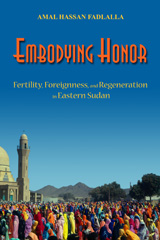 Embodying Honor: Fertility, Foreignness, and Regeneration in Eastern Sudan
Amal Hassan Fadlalla
University of Wisconsin Press, 2007 In the Red Sea Hills of eastern Sudan, where poverty, famines, and conflict loom large, women struggle to gain the status of responsible motherhood through bearing and raising healthy children, especially sons. But biological fate can be capricious in impoverished settings. Amidst struggle for survival and expectations of heroic mothering, women face realities that challenge their ability to fulfill their prescribed roles. Even as the effects of modernity and development, global inequities, and exclusionary government policies challenge traditional ways of life in eastern Sudan and throughout many parts of Africa, reproductive traumas—infertility, miscarriage, children’s illnesses, and mortality—disrupt women’s reproductive health and impede their efforts to achieve the status that comes with fertility and motherhood.
In Embodying Honor Amal Hassan Fadlalla finds that the female body is the locus of anxieties about foreign dangers and diseases, threats perceived to be disruptive to morality, feminine identities, and social well-being. As a “northern Sudanese” viewed as an outsider in this region of her native country, Fadlalla presents an intimate portrait and thorough analysis that offers an intriguing commentary on the very notion of what constitutes the “foreign.” Fadlalla shows how Muslim Hadendowa women manage health and reproductive suffering in their quest to become “responsible” mothers and valued members of their communities. Her historically grounded ethnography delves into women’s reproductive histories, personal narratives, and ritual logics to reveal the ways in which women challenge cultural understandings of gender, honor, and reproduction.
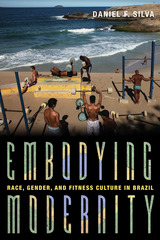 Embodying Modernity: Race, Gender, and Fitness Culture in Brazil
Daniel F. Silva
University of Pittsburgh Press, 2022 Embodying Modernity examines the current boom of fitness culture in Brazil in the context of the white patriarchal notions of race, gender, and sexuality through which fitness practice, commodities, and cultural products traffic. The book traces the imperial meanings and orders of power conveyed through “fit” bodies and their different configurations of muscularity, beauty, strength, and health within mainstream visual media and national and global public spheres. Drawing from a wide range of Brazilian visual media sources including fitness magazines, television programs, film, and social media, Daniel F. Silva theorizes concepts and renderings of modern corporality, its racialized and gendered underpinnings, and its complex relationship to white patriarchal power and capital. This study works to define the ubiquitous parameters of fitness culture and argues that its growth is part of a longer collective nationalist project of modernity tied to whiteness, capitalist ideals, and historical exceptionalism.
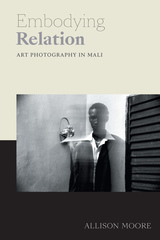 Embodying Relation: Art Photography in Mali
Allison Moore
Duke University Press, 2020 In Embodying Relation Allison Moore examines the tensions between the local and the global in the art photography movement in Bamako, Mali, which blossomed in the 1990s after Malian photographers Seydou Keïta and Malick Sidibé became internationally famous and the Bamako Photography Biennale was founded. Moore traces the trajectory of Malian photography from the 1880s—when photography first arrived as an apparatus of French colonialism—to the first African studio practitioners of the 1930s and the establishment in 1994 of the Bamako Biennale, Africa's most important continent-wide photographic exhibition. In her detailed discussion of Bamakois artistic aesthetics and institutions, Moore examines the post-fame careers of Keïta and Sidibé, the biennale's structure, the rise of women photographers, cultural preservation through photography, and how Mali's shift to democracy in the early 1990s enabled Bamako's art scene to flourish. Moore shows how Malian photographers' focus on cultural exchange, affective connections with different publics, and merging of traditional cultural precepts with modern notions of art embody Caribbean philosopher and poet Édouard Glissant's notion of “relation” in ways that spark new artistic forms, practices, and communities.
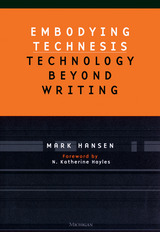 Embodying Technesis: Technology beyond Writing
Mark Hansen
University of Michigan Press, 2000 Critics of contemporary culture have argued that critical theory must keep pace with technological change and, in the process, have instituted a theoretical model that restricts consideration of technology's impact on human experience to those dimensions that can be captured in language. In this wide-ranging critical study of poststructuralism's legacy to contemporary cultural studies, Mark Hansen challenges the hegemony of this model, contending that technologies fundamentally alter our sensory experience and drastically affect what it means to live as embodied human agents.
Embodying Technesis examines how technological changes have rendered obsolete notions of technology as machine and as text. Voicing a sustained plea for rethinking the technological, Hansen argues that radical technological changes--from the steam engine to the internet and virtual reality--have fundamentally altered conditions of perception and, in so doing, changed the prevailing structures of modern experience. By emphasizing the dynamic interaction between technologies and bodies, between the diffuse effects of technological shifts and the collective embodied experiences of contemporary agents, Hansen opens the path for a radical revision of our understanding of the technological.
Mark Hansen is Assistant Professor of English, Princeton University.
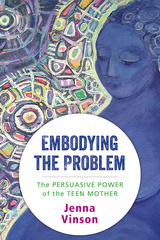 Embodying the Problem: The Persuasive Power of the Teen Mother
Vinson, Jenna
Rutgers University Press, 2018 The dominant narrative of teen pregnancy persuades many people to believe that a teenage pregnancy always leads to devastating consequences for a young woman, her child, and the nation in which they reside. Jenna Vinson draws on feminist and rhetorical theory to explore how pregnant and mothering teens are represented as problems in U.S. newspapers, political discourses, and teenage pregnancy prevention campaigns since the 1970s. Vinson shows that these representations prevent a focus on the underlying structures of inequality and poverty, perpetuate harmful discourses about women, and sustain racialized gender ideologies that construct women’s bodies as sites of national intervention and control. Embodying the Problem also explores how young mothers resist this narrative. Analyzing fifty narratives written by young mothers, the recent #NoTeenShame social media campaign, and her interviews with thirty-three young women, Vinson argues that while the stigmatization of teenage pregnancy and motherhood does dehumanize young pregnant and mothering women, it is at the same time a means for these women to secure an audience for their own messages. More information on the author's website (https://jennavinson.com)
 Embodying the Revolution: The Hebrew Experience and the Globalization of Modern Sports in Interwar Palestine
Ofer Idels
Rutgers University Press, 2026 This original and thought-provoking study offers a fresh perspective on Zionism by exploring Hebrew culture’s ambivalent attitude toward modern sports. Drawing on extensive archival sources and contemporary literary theories, it focuses on Zionism’s surprising anxiety toward sports during the interwar heyday of “muscular Judaism,” revealing an unusual society in which athletes failed to attain national pride and distinction. Addressing themes such as the body, language, space, immigration, internationalism, amateurism, gender, and militarization, Embodying the Revolution presents an innovative reading of Jewish life in Mandate Palestine, linking the marginalization of sports to the meaning and experience of the Zionist Revolution. Idels' compelling interpretation of the appeal of sports, selfhood, and the compromises inherent in radical aspirations—narrated from the periphery of the interwar global rise of sports—challenges contemporary assumptions that dismiss ideology as an elitist myth.
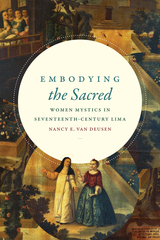 Embodying the Sacred: Women Mystics in Seventeenth-Century Lima
Nancy E. van Deusen
Duke University Press, 2018 In seventeenth-century Lima, pious Catholic women gained profound theological understanding and enacted expressions of spiritual devotion by engaging with a wide range of sacred texts and objects, as well as with one another, their families, and ecclesiastical authorities. In Embodying the Sacred, Nancy E. van Deusen considers how women created and navigated a spiritual existence within the colonial city's complex social milieu. Through close readings of diverse primary sources, van Deusen shows that these women recognized the divine—or were objectified as conduits of holiness—in innovative and powerful ways: dressing a religious statue, performing charitable acts, sharing interiorized spiritual visions, constructing autobiographical texts, or offering their hair or fingernails to disciples as living relics. In these manifestations of piety, each of these women transcended the limited outlets available to them for expressing and enacting their faith in colonial Lima, and each transformed early modern Catholicism in meaningful ways.
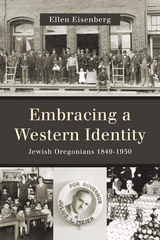 Embracing a Western Identity: Jewish Oregonians, 1849-1950
Ellen Eisenberg
Oregon State University Press, 2015 Not all of Oregon’s pioneers were Christian farmers or bachelor prospectors. Indeed, many of the first brick buildings on Oregon’s newly platted Main Streets were built by Jewish merchants whose services were essential to town founding and growth.
In Embracing a Western Identity, Ellen Eisenberg places Jewish history in the larger context of western narratives, challenging the traditional view that the “authentic” North American Jewish experience stems from New York. The westward paths of Jewish Oregonians and their experiences of place shaped the communities, institutions, and identities they created, distinguishing them from other American Jewish communities. Eisenberg traces the Oregon Jewish experience from its pioneer beginnings in the mid-nineteenth century to the highly concentrated Portland communities of the mid-twentieth century.
Drawing on extensive archival resources at the Oregon Jewish Museum, this historical commentary explores patterns of migration and settlement, the place of Jews in the state’s ethnic landscape, their engagement in politics, the development of institutions, and their relationship to Zionism. Departing from familiar treatments of the Jewish experience, Embracing a Western Identity provides a critical look at the impact of place and opportunity upon the identities of migrants both as Oregonians and as American Jews. Readers and scholars interested in western history—religious, ethnic, expansionist, and otherwise—will enjoy Eisenberg’s accessible writing style and rich photograph collection.
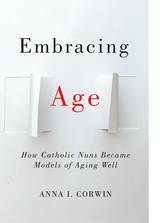 Embracing Age: How Catholic Nuns Became Models of Aging Well
Anna I. Corwin
Rutgers University Press, 2021 Embracing Age: How Catholic Nuns Became Models of Aging Well examines a community of individuals whose aging trajectories contrast mainstream American experiences. In mainstream American society, aging is presented as a “problem,” a state to be avoided as long as possible, a state that threatens one’s ability to maintain independence, autonomy, control over one’s surroundings. Aging “well” (or avoiding aging) has become a twenty-first century American preoccupation. Embracing Age provides a window into the everyday lives of American Catholic nuns who experience longevity and remarkable health and well-being at the end of life. Catholic nuns aren’t only healthier in older age, they are healthier because they practice a culture of acceptance and grace around aging. Embracing Age demonstrates how aging in the convent becomes understood by the nuns to be a natural part of the life course, not one to be feared or avoided. Anna I. Corwin shows readers how Catholic nuns create a cultural community that provides a model for how to grow old, decline, and die that is both embedded in American culture and quite distinct from other American models. Instructor's Guide is available at no cost (https://d3tto5i5w9ogdd.cloudfront.net/wp-content/uploads/2021/08/26120146/corwin_instructor_guide_final.pdf). Open access edition funded by the National Endowment for the Humanities.
The text of this book is licensed under a Creative Commons Attribution NonCommercial-NoDerivatives 4.0 International License: https://creativecommons.org/licenses/by-nc-nd/4.0/
Download open access ebook here.
Embracing Arms: Cultural Representation of Slavic and Balkan Women in War
Yana Hashamova
Central European University Press, 2012 Discursive practices during war polarize and politicize gender: they normally require men to fulfill a single, overriding task—destroy the enemy—but impose a series of often contradictory expectations on women. The essays in the book establish links between political ideology, history, psychology, cultural studies, cinema, literature, and gender studies and addresses questions such as— what is the role of women in war or military conflicts beyond the well-studied victimization? Can the often contradictory expectations of women and their traditional roles be (re)thought and (re)constructed? How do cultural representations of women during war times reveal conflicting desires and poke holes in the ideological apparatus of the state and society?
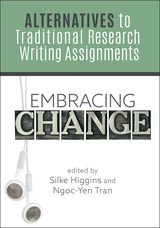 Embracing Change: Alternatives to Traditional Research Writing Assignments
Silke Higgins
American Library Association, 2022 The pedagogical value and real-life applicability of traditional research writing assignments has been investigated since at least the 1990s, and the increase in adoption of alternative assignments could be an indication that students are questioning their long-term benefits. Traditional research writing assignments do not always align with the goals and outcomes that students set for their education. Embracing Change: Alternatives to Traditional Research Writing Assignments collects existing alternative assignments from librarians and classroom instructors and examines their benefits and drawbacks, impact on various student populations, and the support needed to make them successful. In two parts—Analog-Driven Assignments and Technology-Driven Assignments—authors offer a wealth of insight into the theory and practice of utilizing alternative assignments. Case studies detail the development of assignments, their implementation, lessons learned, and assessment, and provide examples and reference materials for incorporating or refining your own alternative assignments. Projects covered include: - how students engage with writing gray literature
- producing a local voting guide
- creating museum-level exhibit labels
- composing and printing original poems using a letterpress
- developing finding aids
- writing a children’s book
- creating infographics and lightning talk videos
- learning digital literacy using podcasts
- a variety of digital humanities projects
Embracing Change is a testament to the power of interdisciplinary collaboration, highlights the value of alternative assignments, and provides librarians and educators with practical guidance for creating, implementing, and supporting alternatives to research writing assignments.
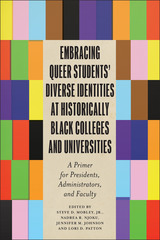 Embracing Queer Students’ Diverse Identities at Historically Black Colleges and Universities: A Primer for Presidents, Administrators, and Faculty
Steve D. Mobley Jr.
Rutgers University Press, 2025 Embracing Queer Students’ Diverse Identities at Historically Black Colleges and Universities: A Primer for Presidents, Administrators, and Faculty is both a call to action and a resource for historically Black college and university (HBCU) leaders and administrators, focusing on historical and contemporary issues related to expanding inclusionary policies and practices for members of HBCU communities who identify as lesbian, gay, bisexual, transgender, and queer (LGBTQ+). The essays, by HBCU presidents, faculty, administrators, alumni, and researchers, explore the specific challenges and considerations of serving LGBTQ+ students within these distinct college and university settings, with the ultimate goal of summoning HBCU communities, higher education scholars, and scholar-practitioners to take thoughtful and urgent action to support and recognize LGBTQ+ students. With this book as a primary resource, HBCUs can work toward becoming fully inclusive campus communities for all of their students.
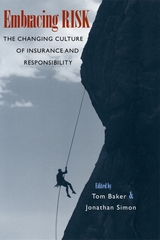 Embracing Risk: The Changing Culture of Insurance and Responsibility
Edited by Tom Baker and Jonathan Simon
University of Chicago Press, 2001 For much of the twentieth century, industrialized nations addressed social problems, such as workers' compensation benefits and social welfare programs, in terms of spreading risk. But in recent years a new approach has emerged: using risk both as a way to conceive of and address social problems and as an incentive to reduce individual claims on collective resources.
Embracing Risk explores this new approach from a variety of perspectives. The first part of the book focuses on the interplay between risk and insurance in various historical and social contexts. The second part examines how risk is used to govern fields outside the realm of insurance, from extreme sports to policing, mental health institutions, and international law. Offering an original approach to risk, insurance, and responsibility, the provocative and wide-ranging essays in Embracing Risk demonstrate that risk has moved well beyond its origins in the insurance trade to become a central organizing principle of social and cultural life.
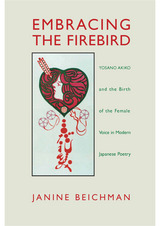 Embracing the Firebird: Yosano Akiko and the Birth of the Female Voice in Modern Japanese Poetry
Janine Beichman
University of Hawaii Press, 2002 How did a girl from the provinces, meant to do nothing more than run the family store, become a bold and daring poet whose life and work helped change the idea of love in modern Japan? Embracing the Firebird is the first book-length study in English of the early life and work of Yosano Akiko (1879-1942), the most famous post-classical woman poet of Japan. It follows Akiko, who was born into a merchant family in the port city of Sakai near Osaka, from earliest childhood to her twenties, charting the slow process of development before the seemingly sudden metamorphosis.
Akiko's later poetry has now begun to win long-overdue recognition, but in terms of literary history the impact of Midaregami (Tangled Hair, 1901), her first book, still overshadows everything else she wrote, for it brought individualism to traditional tanka poetry with a tempestuous force and passion found in no other work of the period. Embracing the Firebird traces Akiko's emotional and artistic development up to the publication of this seminal work, which became a classic of modern Japanese poetry and marked the starting point of Akiko's forty-year-long career as a writer. It then examines Tangled Hair itself, the characteristics that make it a unified work of art, and its originality.
The study throughout includes Janine Beichman's elegant translations of poems by Yosano Akiko (both those included in Tangled Hair and those not), as well as poems by contemporaries such as Yosano Tekkan, Yamakawa Tomiko, and others.
Embracing the Law: Reading Doctrine and Covenants 42
Jeremiah John
Neal A. Maxwell Institute for Religious Scholarship, 2017 According to Joseph Smith, Doctrine and Covenants 42 “embraces the law of the church.” In this collection of essays, six scholars probe the significance of this revelation, especially the significance of its status as "law." In what ways is D&C 42—especially the law of consecration—binding for Latter-day Saints today? These wide-ranging essays argue that the law remains in force, but in many different ways.
Embracing the Nonhuman in the Gospel of Mark
Dong Hyeon Jeong
SBL Press, 2023 In Embracing the Nonhuman in the Gospel of Mark, Dong Hyeon Jeong approaches the Gospel of Mark through the lens of nonhuman studies with an eye toward ecological consciousness. Drawing on the fields of nonhuman studies and postcolonial ecocriticism, Jeong disrupts nthropocentric readings of Mark by engaging animality, vegetality, and animacy theories in light of (colonized) ethnicity. His intersectional reading of Mark highlights the importance of engaging nonhuman biblical interpretation while being sensitive to the issue of racism arising from animalizing the other. By doing so, this book reimagines the Markan Jesus as the colonized messiah who embraces the nonhuman. Jeong encourages readers to consider the interconnectedness of humans, animals, and the environment, while also addressing issues of power, oppression, and marginalization.
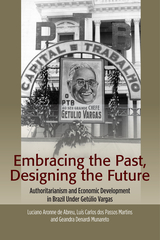 Embracing the Past, Designing the Future: Authoritarianism and Economic Development in Brazil Under Getulio Vargas
Luciano Aronne De Abreu
Sussex Academic Press, 2022 Embracing the Past, Designing the Future; provides an historical overview of Brazilian authoritarianism and social/economic development during the political era (193045) of Getulio Vargas as viewed and understood by Oliveira Viana and Azevedo Amaral, two of the principal intellectuals and ideologues of the regime at the time. The heart of the discussion is the legitimacy of authoritarian modernization. Brazil's contemporary uncertainty has deep parallels with the earlier period: unruly and political debate coupled with economic stagnation. It was during the Vargas era that the power bases and fundamental principals of the construction of modern Brazil were defined in terms of its political administration, economy, and industry. These features may still be perceived in the country today, albeit claimed or rejected by political leaders such as Luiz Inacio Lula da Silva. Linkage between authoritarianism and the economic development of Brazil is strong. Both periods of exceptional national economic and social growth were associated exactly to its two governmental authoritarian periods in the twentieth century. This volume addresses a complex of ideological difficulties that go to the heart of what the Brazilian nation stands for: its racial construction; its colonial heritage; the fractured nature of the relationship between society and state; and the dangers of political personalization.
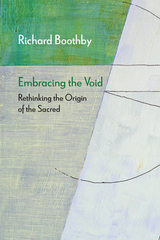 Embracing the Void: Rethinking the Origin of the Sacred
Richard Boothby
Northwestern University Press, 2023 A radical reinterpretation of the origin of religion through a psychoanalytic theorization of the unknown
Renowned psychoanalytic philosopher Richard Boothby puts forward a novel theory of religion inspired by Jacques Lacan’s theory of das Ding, the disquieting, inaccessible dimension of fellow human beings. This notion of an unfathomable excess, originally encountered in the figure of the mother, led Lacan to break with Freud’s formulation of the Oedipus complex and underlies Lacan’s distinctive conception of unconscious dynamics. Leaning on this account, Boothby shows how our sense of the sacred arises from our relation to what we do not know.
Embracing the Void lays out the range of Freud’s attempts at a psychoanalytic theory of religion and then sketches the rough contours of Lacan’s contrasting approach. From there, Boothby offers the theoretical tools for interpreting the religious impulse and analyzes key religious traditions, from ancient Greek polytheism to Judaism and Christianity, and from Hinduism and Buddhism to Islam, finally turning to modern capitalist culture and the seductive deity that dominates it—money. Lucid, accessible, and compelling, the book provides a cogent intervention in one of the psychoanalytic tradition’s most contentious topics and offers a new approach to our understanding of religion.
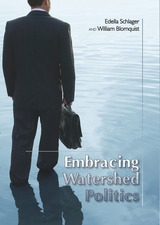 Embracing Watershed Politics
Edella Schlager
University Press of Colorado, 2008 As Americans try to better manage and protect the natural resources of our watersheds, is politics getting in the way? Why does watershed management end up being so political? In Embracing Watershed Politics, political scientists Edella Schlager and William Blomquist provide timely illustrations and thought-provoking explanations of why political considerations are essential, unavoidable, and in some ways even desirable elements of decision making about water and watersheds. With decades of combined study of water management in the United States, they focus on the many contending interests and communities found in America's watersheds, the fundamental dimensions of decision making, and the impacts of science, complexity, and uncertainty on watershed management. Enriched by case studies of the organizations and decision making processes in several major U.S. watersheds (the Delaware River Basin, San Gabriel River, Platte River, and the Columbia River Basin), Embracing Watershed Politics presents a reasoned explanation of why there are so few watershed-scale integrated management agencies and how the more diverse multi-organizational arrangements found in the vast majorities of watersheds work. Although the presence of multiple organizations representing a multitude of communities of interest complicates watershed management, these institutional arrangements can-under certain conditions-suit the complexity and uncertainty associated with watershed management in the twenty-first century.
 Embroidered with Gold, Strung with Pearls: The Traditional Ballads of Bosnian Women
Aida Vidan
Harvard University Press, 2003 Bosnian traditional ballads have intrigued many by their beauty and eloquence, from Goethe's poetic interest in them in the eighteenth century to the work of twentieth-century scholars such as Milman Parry and Albert Lord. These songs are now available to the English reader in a bilingual edition offering a selection of never before translated or published materials from Harvard University's Parry Collection. The forty oral ballads, many appearing in multiple versions, were performed by Bosnian women and gathered in the Gacko region of Bosnia and Herzegovina in the 1930s. Using Parry and Lord as a starting point, Vidan supplements their theories with broader ethnological, cultural, and historical data. She seeks to understand issues such as the stability of the ballad, its transmission and dissemination, and its ties to mythology. She addresses an imbalance created by the pronounced focus on South Slavic epic songs in scholarly work of recent decades. While showing that each of the narrative genres in verse maintains its own stylistic features, she demonstrates that they nevertheless consist of the same basic compositional elements. In addition to comparative analysis of the materials from the Parry Collection, Vidan discusses numerous examples from published and unpublished sources in Croatian and Serbian.
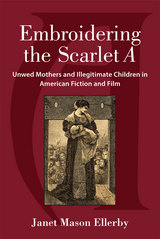 Embroidering the Scarlet A: Unwed Mothers and Illegitimate Children in American Fiction and Film
Janet Mason Ellerby
University of Michigan Press, 2015 Embroidering the Scarlet A traces the evolution of the “fallen woman” from the earliest novels to recent representations in fiction and film, including The Scarlet Letter, The Sound and the Fury, The Color Purple, and Love Medicine, and the films Juno and Mother and Child. Interweaving her own experience as a pregnant teen forced to surrender her daughter and pledge secrecy for decades, Ellerby interrogates “out-of-wedlock” motherhood, mapping the ways archetypal scarlet women and their children have been exiled as social pariahs, pardoned as blameless pawns, and transformed into empowered women. Drawing on narrative, feminist, and autobiographical theory, the book examines the ways that the texts have affirmed, subverted, or challenged dominant thinking and the prevailing moral standards as they have shifted over time. Using her own life experience and her uniquely informed perspective, Ellerby assesses the effect these stories have on the lives of real women and children. By inhabiting the space where ideology meets narrative, Ellerby questions the constricting historical, cultural, and social parameters of female sexuality and permissible maternity. As a feminist cultural critique, a moving autobiographical journey, and an historical investigation that addresses both fiction and film, Embroidering the Scarlet A will appeal to students and scholars of literature, history, sociology, psychology, women’s and gender studies, and film studies. The book will also interest general readers, as it relates the experience of surrendering a child to adoption at a time when birthmothers were still exiled, birth records were locked away, and secrecy was still mandatory. It will also appeal to those concerned with adoption or the cultural shifts that have changed our thinking about illegitimacy.
 The Embryogenesis of the Human Skull: An Anatomic and Radiographic Atlas
Robert Shapiro and Franklin Robinson
Harvard University Press, 1980 Rapidly developing diagnostic and therapeutic methods involving direct contact with the human fetus—fetoscopy, fetal surgery, ultrasonic scanning— demand a precise knowledge of normal structural development during gestation. Toward achieving that goal of precision, Drs. Robert Shapiro and Franklin Robinson have created an atlas described by Richard L. Sidman as “a solid piece of research, executed with considerable esthetic as well as scholarly finesse, and [which] will serve as the definitive study on an important aspect of human fetal development.”
The authors have documented the early development of the human skull in terms of gross size, shape, and the behavior of the individual bones com posing the skull with reference to their ossification centers, ossification rates, and relationships. The data are presented in very high quality photographs and radiographs of the dried skull in several relevant orientations, low magnification color photomicrographs of well sectioned and stained specimens, and color photographs of an unusually fine series of transilluminated skulls prepared by the Spalteholz method. Line drawings are also presented to assist in interpretation.
The atlas is organized according to gestational age, and a tabular summary is given of the 63 specimens ranging in age from ten to forty fetal weeks.
This will be the basic normative standard reference for studies on develop mental skeletal disorders of the head and neck; it will be useful as well in the study of developmental brain diseases. Radiologists engaged in visualizing the fetus and diagnosing fetal diseases in situ by ultrasound, computerized tomography, and other methods will find this an invaluable tool.
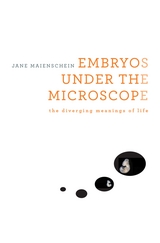 Embryos under the Microscope: The Diverging Meanings of Life
Jane Maienschein
Harvard University Press, 2014 Too tiny to see with the naked eye, the human embryo was just a hypothesis until the microscope made observation of embryonic development possible. This changed forever our view of the minuscule cluster of cells that looms large in questions about the meaning of life. Embryos under the Microscope examines how our scientific understanding of the embryo has evolved from the earliest speculations of natural philosophers to today’s biological engineering, with its many prospects for life-enhancing therapies. Jane Maienschein shows that research on embryos has always revealed possibilities that appear promising to some but deeply frightening to others, and she makes a persuasive case that public understanding must be informed by up-to-date scientific findings.
Direct observation of embryos greatly expanded knowledge but also led to disagreements over what investigators were seeing. Biologists confirmed that embryos are living organisms undergoing rapid change and are not in any sense functioning persons. They do not feel pain or have any capacity to think until very late stages of fetal development. New information about DNA led to discoveries about embryonic regulation of genetic inheritance, as well as evolutionary relationships among species. Scientists have learned how to manipulate embryos in the lab, taking them apart, reconstructing them, and even synthesizing—practically from scratch—cells, body parts, and maybe someday entire embryos. Showing how we have learned what we now know about the biology of embryos, Maienschein changes our view of what it means to be alive.
EMC and Functional Safety of Automotive Electronics
Kai Borgeest
The Institution of Engineering and Technology, 2018 Electromagnetic compatibility (EMC) deals with the unintentional propagation and reception of electromagnetic energy which may cause disturbances or even physical damage in electronic or electromechanical systems. With the increase in number and density of electronic devices and systems in modern vehicles, EMC has become a substantial concern and a key cause of malfunction of automotive electronics.
EMC Pocket Guide: Key EMC facts, equations and data
Kenneth Wyatt
The Institution of Engineering and Technology, 2013 Every electric product designed and manufactured worldwide must meet electromagnetic compatibility (EMC) regulations, and yet, EMC compliance staff levels have been cut to the bone in companies large and small. If you are a working engineer or technician, the EMC Pocket Guide: Key EMC facts, equations and data is the first place to look while designing for EMC and your quide to thwarting electromagnetic interference.
 Emerald City Blues: A Novel
H. Lee Barnes
University of Nevada Press, 2025 In the summer of 1942, Eve Halverson assumes her dead sister’s identity and leaves behind her small-town life in Washington for the promise of something new in San Pedro, California. Determined to support the war effort, she takes a job at a boot factory, stepping into an unfamiliar world of sweat, steel, and camaraderie. Among the women on the factory floor, she finds resilience, laughter, and unexpected friendships that begin to reshape her understanding of the world—and herself.
But it’s the quiet, captivating dockworker and blues singer Hard Times (H.T.) who truly upends her life. As Eve grows closer to H.T., she finds herself drawn into his world, one filled with music, longing, and the ever-present shadows of prejudice. Their connection forces Eve to confront realities she’d never imagined, challenging the boundaries of her own perceptions and the risks of crossing societal lines. When Eve becomes a witness to a violent crime at a blues club, her life takes a dangerous turn. As she navigates the escalating threats, she leans on the strength of her newfound friends and the fragile, complex bond she shares with H.T.
Set against the vibrant yet turbulent backdrop of World War II–era California, Emerald City Blues is a heartfelt coming-of-age story. It explores the complexities of love, the power of friendship, and the courage it takes to forge your own path in an uncertain world. Eve’s journey is one of discovery—not just of the world beyond her hometown, but of the resilience and strength she never knew she possessed.
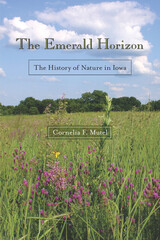 The Emerald Horizon: The History of Nature in Iowa
Cornelia F. Mutel
University of Iowa Press, 2008 In The Emerald Horizon, Cornelia Mutel combines lyrical writing with meticulous scientific research to portray the environmental past, present, and future of Iowa. In doing so, she ties all of Iowa's natural features into one comprehensive whole. Since so much of the tallgrass state has been transformed into an agricultural landscape, Mutel focuses on understanding today's natural environment by understanding yesterday's changes. After summarizing the geological, archaeological, and ecological features that shaped Iowa's modern landscape, she recreates the once-wild native communities that existed prior to Euroamerican settlement. Next she examines the dramatic changes that overtook native plant and animal communities as Iowa's prairies, woodlands, and wetlands were transformed. Finally she presents realistic techniques for restoring native species and ecological processes as well as a broad variety of ways in which Iowans can reconnect with the natural world. Throughout, in addition to the many illustrations commissioned for this book, she offers careful scientific exposition, a strong sense of respect for the land, and encouragement to protect the future by learning from the past. The "emerald prairie" that "gleamed and shone to the horizon's edge," as botanist Thomas Macbride described it in 1895, has vanished. Cornelia Mutel's passionate dedication to restoring this damaged landscape—and by extension the transformed landscape of the entire Corn Belt—invigorates her blend of natural history and human history. Believing that citizens who are knowledgeable about native species, communities, and ecological processes will better care for them, she gives us hope—and sound suggestions—for the future.
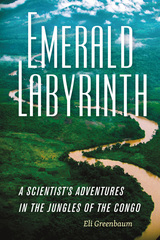 Emerald Labyrinth: A Scientist's Adventures in the Jungles of the Congo
Eli Greenbaum
University Press of New England, 2017 Emerald Labyrinth is a scientist and adventurer’s chronicle of years exploring the rainforests of sub-Saharan Africa. The richly varied habitats of the Democratic Republic of the Congo offer a wealth of animal, plant, chemical, and medical discoveries. But the country also has a deeply troubled colonial past and a complicated political present. Author Eli Greenbaum is a leading expert in sub-Saharan herpetology—snakes, lizards, and frogs—who brings a sense of wonder to the question of how science works in the twenty-first century. Along the way he comes face to face with spitting cobras, silverback mountain gorillas, wild elephants, and the teenaged armies of AK-47-toting fighters engaged in the continent’s longest-running war. As a bellwether of the climate and biodiversity crises now facing the planet, the Congo holds the key to our planet’s future. Writing in the tradition of books like The Lost City of Z, Greenbaum seeks out the creatures struggling to survive in a war-torn, environmentally threatened country. Emerald Labyrinth is an extraordinary book about the enormous challenges and hard-won satisfactions of doing science in one of the least known, least hospitable places on earth.
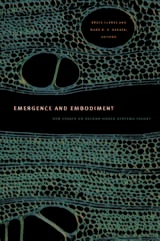 Emergence and Embodiment: New Essays on Second-Order Systems Theory
Bruce Clarke and Mark B. N. Hansen, eds.
Duke University Press, 2009 Emerging in the 1940s, the first cybernetics—the study of communication and control systems—was mainstreamed under the names artificial intelligence and computer science and taken up by the social sciences, the humanities, and the creative arts. In Emergence and Embodiment, Bruce Clarke and Mark B. N. Hansen focus on cybernetic developments that stem from the second-order turn in the 1970s, when the cyberneticist Heinz von Foerster catalyzed new thinking about the cognitive implications of self-referential systems. The crucial shift he inspired was from first-order cybernetics’ attention to homeostasis as a mode of autonomous self-regulation in mechanical and informatic systems, to second-order concepts of self-organization and autopoiesis in embodied and metabiotic systems. The collection opens with an interview with von Foerster and then traces the lines of neocybernetic thought that have followed from his work. In response to the apparent dissolution of boundaries at work in the contemporary technosciences of emergence, neocybernetics observes that cognitive systems are operationally bounded, semi-autonomous entities coupled with their environments and other systems. Second-order systems theory stresses the recursive complexities of observation, mediation, and communication. Focused on the neocybernetic contributions of von Foerster, Francisco Varela, and Niklas Luhmann, this collection advances theoretical debates about the cultural, philosophical, and literary uses of their ideas. In addition to the interview with von Foerster, Emergence and Embodiment includes essays by Varela and Luhmann. It engages with Humberto Maturana’s and Varela’s creation of the concept of autopoiesis, Varela’s later work on neurophenomenology, and Luhmann’s adaptations of autopoiesis to social systems theory. Taken together, these essays illuminate the shared commitments uniting the broader discourse of neocybernetics. Contributors. Linda Brigham, Bruce Clarke, Mark B. N. Hansen, Edgar Landgraf, Ira Livingston, Niklas Luhmann, Hans-Georg Moeller, John Protevi, Michael Schiltz, Evan Thompson, Francisco J. Varela, Cary Wolfe
 The Emergence of a Euro-American Radical Right
Kaplan, Jeffrey
Rutgers University Press, 1998 The United States and Western Europe are experiencing a new and important cultural and political development: the appearance of a right wing extremist movement that crosses the Atlantic Ocean and transcends national boundaries with as much ease as do e-mail messages on the Internet. In this book, Jeffrey Kaplan and Leonard Weinberg argue that there now exists a set of conditions common to the United States and Western Europe that draws right wing radicals on both sides of the Atlantic closer together. These conditions, based on demographic pressures, social dislocation, economic changes, and technological advances, have set the stage for the formation of a new Euro-American radical right movement whose motives and characteristics differ from the right wing groups of the early twentieth century. During the first thirty years of this century, radical right wing ideas and material support flowed primarily from Europe to the United States. In recent years, the inspiration for the movement has tended to flow in the opposite direction, with the establishment of various American-based groups, like the Ku Klux Klan and the White Aryan Resistance, on European soil. Kaplan and Weinberg contend that unlike their predecessors contemporary Western right wing groups develop a common identity based more on racial solidarity than on national identity. To support their argument, the authors provide a history of extreme right wing activity in the West and a comprehensive, detailed overview of major figures, groups, and characteristics that comprise the Euro-American radical right. They discuss the role of the Internet in facilitating the transatlantic community and offer personal, inside accounts of people involved in the various movements.
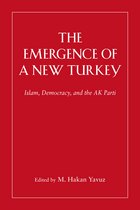 The Emergence of a New Turkey: Islam, Democracy, and the AK Parti
Yavuz, M. Hakan
University of Utah Press, 2006 Utah Series in Middle East Studies The start of accession talks between Turkey and the European Union presents an important challenge for Europe and the Muslim world. Although Turkey has often been cited as a model for the accommodation of Islam and secularism, Islam is still a profound factor in Turkish politics. This book explores the conditions under which an Islamic movement or party ceases to be Islamic. The Emergence of a New Turkey explains the social, economic, and historical origins of the ruling Justice and Development Party, which evolved from Turkey's half-century-old Islamic National Outlook movement. It focuses on the interplay between internal and external forces in the transformation of political Islam into a conservative democratic party. The book also discusses the effect of neoliberal economic policies in Turkey, offering keen insight into one of the most successful transformations of an Islamic movement in the Muslim world. In addition to satisfying Turkish studies specialists, this lucidly written book is also suited for use in courses on comparative politics, social movements, and Middle East history and politics.
The Emergence of a UAW Local, 1936–1939: A Study in Class and Culture
Peter Friedlander
University of Pittsburgh Press, 1975 Peter Friedlander documents the formation of a local United Automobile Workers union at a mid-sized parts factory during the turbulent 1930s. Blending oral history based on personal interviews with a keen analysis of the worker's class structure and widely varied cultural backgrounds, Freidlander describes the transformation of a working-class community by its own actions and the ensuing stratification and factionalizing within that union. The result is a firsthand account of the experience of unionization in personal and social terms.
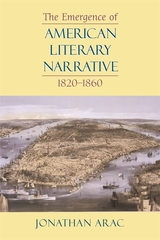 The Emergence of American Literary Narrative, 1820-1860
Jonathan Arac
Harvard University Press In the mid-nineteenth century writers such as Nathaniel Hawthorne and Herman Melville produced works of fiction that even today, centuries later, help to define what American literature means. In this work of innovative literary history, Jonathan Arac explains what made this remarkable creativity possible and what it accomplished. His work also delves into a deep paradox that has haunted American literature: our nation's great works of literary narrative place themselves at a tense distance from our national life.
Arac prepares the way with substantial critical readings of masterpieces such as Moby-Dick, The Scarlet Letter, Uncle Tom's Cabin, and the Narrative of Frederick Douglass, as well as astute commentary on dozens of other works of fiction, comic sketches, life testimony, and history. His interpretation demonstrates how the national crisis over slavery around 1850 led writers to invent new forms. In light of this analysis, Arac proposes an explanation for the shifting relations between prose narratives and American political history; he shows how these new works changed the understanding of what prose narrative was capable of doing--and how this moment when the literary writer was redefined as an artist inaugurated a continuing crisis in the relation of narrative to its public.
 The Emergence of China: Opportunities and Challenges for Latin America and the Caribbean
Robert Devlin
Harvard University Press China is emerging as a truly global economic and political power. China’s impact on Latin America and the Caribbean region is mixed, however—fostering a trade market for some countries, but creating competition for others.
This pioneering volume, produced by the Inter-American Development Bank’s Integration and Regional Programs Department and Research Department, provides a comprehensive overview of China’s economic policy and performance over recent decades and contrasts them with the Latin American experience. What are the underlying factors behind China’s competitive edge? What are the strategic implications of China’s rise for growth and development in Latin America? These questions open new avenues for thinking about revitalizing development strategies in Latin America in the face of China’s successful development and reduction of poverty. This insightful report is a must-read for analysts, policymakers, and development practitioners, not only in Latin America and the Caribbean, but wherever China’s presence is being felt.
The Emergence of China is a copublication of the David Rockefeller Center for Latin American Studies and the Inter-American Development Bank.
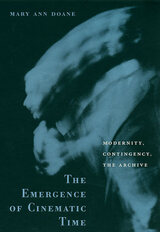 The Emergence of Cinematic Time: Modernity, Contingency, the Archive
Mary Ann Doane
Harvard University Press, 2002 Hailed as the permanent record of fleeting moments, the cinema emerged at the turn of the nineteenth century as an unprecedented means of capturing time--and this at a moment when disciplines from physics to philosophy, and historical trends from industrialization to the expansion of capitalism, were transforming the very idea of time. In a work that itself captures and reconfigures the passing moments of art, history, and philosophy, Mary Ann Doane shows how the cinema, representing the singular instant of chance and ephemerality in the face of the increasing rationalization and standardization of the day, participated in the structuring of time and contingency in capitalist modernity.
At this book's heart is the cinema's essential paradox: temporal continuity conveyed through "stopped time," the rapid succession of still frames or frozen images. Doane explores the role of this paradox, and of notions of the temporal indeterminacy and instability of an image, in shaping not just cinematic time but also modern ideas about continuity and discontinuity, archivability, contingency and determinism, and temporal irreversibility. A compelling meditation on the status of cinematic knowledge, her book is also an inquiry into the very heart and soul of modernity.
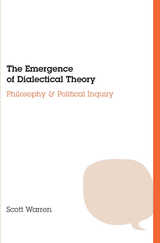 The Emergence of Dialectical Theory: Philosophy and Political Inquiry
Scott Warren
University of Chicago Press, 1984 Scott Warren’s ambitious and enduring work sets out to resolve the ongoing identity crisis of contemporary political inquiry. In the Emergence of Dialectical Theory, Warren begins with a careful analysis of the philosophical foundations of dialectical theory in the thought of Kant, Hegel, and Marx. He then examines how the dialectic functions in the major twentieth-century philosophical movements of existentialism, phenomenology, neomarxism, and critical theory. Numerous major and minor philosophers are discussed, but the emphasis falls on two of the greatest dialectical thinkers of the previous century: Maurice Merleau-Ponty and Jürgen Habermas. Warren’s shrewd critique is indispensable to those interested in the history of social and political thought and the philosophical foundations of political theory. His work offers an alternative for those who find postmodernism to be at a philosophical impasse.
The Emergence of German Idealism
Michael Baur
Catholic University of America Press, 2018 Immanuel Kant's "critical philosophy" is rightly renowned for its criticism of the metaphysical pretensions of reason unaided by experience. It therefore seems ironic that, within a single generation, some of Kant's most important followers argued that th
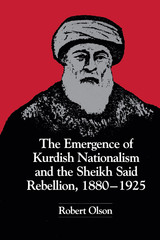 The Emergence of Kurdish Nationalism and the Sheikh Said Rebellion, 1880–1925
By Robert Olson
University of Texas Press, 1989 The last quarter of the nineteenth century was crucial for the development of Kurdish nationalism. It coincided with the reign of Abdulhamid II (1876-1909), who emphasized Pan-Islamic policies in order to strengthen the Ottoman Empire against European and Russian imperialism, The Pan-Islamic doctrines of the Ottoman Empire enabled sheikhs (religious leaders) from Sheikh Ubaydallah of Nehri in the 1870s and 1880s to Sheikh Said in the 1920s-to become the principal nationalist leaders of the Kurds. This represented a new development in Middle Eastern and Islamic history and began an important historical pattern in the Middle East long before the emergence of the religiousnationalist leadership of Ayatollah Khomeini in Iran. This is the first work in any Western language dealing with the development of Kurdish nationalism during this period and is supported with documentation not previously utilized, principally from the Public Record Office in Great Britain. In addition, the author provides much new material on Turkish, Armenian, Iranian, and Arab history and new insights into Turkish-Armenian relations during the most crucial era of the history of these two peoples.
The Emergence of Liberation Theology: Radical Religion and Social Movement Theory
Christian Smith
University of Chicago Press, 1991 Liberation theology is a school of Roman Catholic thought which teaches that a primary duty of the church must be to promote social and economic justice. In this book, Christian Smith explains how and why the liberation theology movement emerged and succeeded when and where it did.
Emergence of Life on Earth: A Historical and Scientific Overview
Fry, Iris
Rutgers University Press, 2000 How did life emerge on Earth? Is there life on other worlds? These questions, until recently confined to the pages of speculative essays and tabloid headlines, are now the subject of legitimate scientific research. This book presents a unique perspective--a combined historical, scientific, and philosophical analysis, which does justice to the complex nature of the subject. The book's first part offers an overview of the main ideas on the origin of life as they developed from antiquity until the twentieth century. The second, more detailed part of the book examines contemporary theories and major debates within the origin-of-life scientific community.
Topics include: - Aristotle and the Greek atomists' conceptions of the organism
- Alexander Oparin and J.B.S. Haldane's 1920s breakthrough papers
- Possible life on Mars?
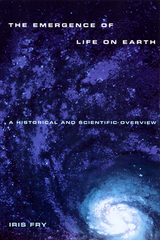 Emergence of Life on Earth: A Historical and Scientific Overview
Fry, Iris
Rutgers University Press, 2000 "Essential reading for people in disciplines ranging from philosophy to biology. It is simply the best general book that I know on the question of the origin of life."
--Michael Ruse, author of Mystery of Mysteries: Is Evolution a Social Construction?
"Fry has fashioned a masterful account of the history, philosophy, and science of the origin of life and the possibility of extraterrestrial life. Her story weaves profound Western ideas of who we are and where we came from, from Aristotle to Gould, from Kant to NASA."
--Woodruff Sullivan, University of Washington
"A rich source for the specialist and thought-provoking reading for the lay person."
--Gunter Wachtershauser, University of Regensburg, Germany
How did life emerge on Earth? Is there life on other worlds? These questions, until recently confined to the pages of speculative essays and tabloid headlines, are now the subject of legitimate scientific research. This book presents a unique perspective--a combined historical, scientific, and philosophical anaylsis, which does justice to the complex nature of the subject. The book's first part offers an overview of the main ideas on the origin of life as they developed from antiquity until the twentieth century. The second, more detailed part of the book examines contemporary theories and major debates within the origin-of-life scientific community.
Topics include:
- Aristotle and the Greek atomists' conceptions of the organism
- Alexander Oparin and J.B.S. Haldane's 1920s breakthrough papers
- Possible life on Mars?
 The Emergence of Modern Business Enterprise in France, 1800–1930
Michael Stephen Smith
Harvard University Press, 2006 In this magisterial study, Michael Smith explains how France left behind small-scale merchant capitalism for the large corporate enterprises that would eventually dominate its domestic economy and project French influence throughout the world.
Arguing against the long-standing view that French economic and business development was crippled by missed opportunities and entrepreneurial failures, Smith presents a story of considerable achievement. French companies made major contributions to the Second Industrial Revolution of 1880-1930, especially in ferrous and non-ferrous metallurgy, electrochemicals, industrial gases, and motor vehicles. Rejecting the notion that France took a separate route to economic modernity, Smith argues that it tracked other industrial nations along a path dominated by large-scale production and corporate enterprise. Technological and organizational capabilities acquired by French companies prior to 1930 played a key role in the country's rapid economic recovery after World War II and its broader economic success in the second half of the twentieth century. Smith also addresses the distinctive characteristics of French economic and business development, including the pivotal role of the French state, the pervasive influence of French financiers, and the significance of labor conflict.
This superb account is an invaluable contribution to business history and the history of modern France.
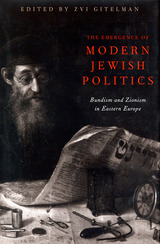 The Emergence Of Modern Jewish Politics: Bundism And Zionism In Eastern Europe
Zvi Gitelman
University of Pittsburgh Press, 2003 The Emergence of Modern Jewish Politics examines the political, social, and cultural dimensions of Zionism and Bundism, the two major political movements among East European Jews during the first half of the twentieth century.
While Zionism achieved its primary aim—the founding of a Jewish state—the Jewish Labor Bund has not only practically disappeared, but its ideals of socialism and secular Jewishness based in the diaspora seem to have failed. Yet, as Zvi Gitelman and the various contributors argue, it was the Bund that more profoundly changed the structure of Jewish society, politics, and culture.
In thirteen essays, prominent historians, political scientists, and professors of literature discuss the cultural and political contexts of these movements, their impact on Jewish life, and the reasons for the Bund’s demise, and they question whether ethnic minorities are best served by highly ideological or solidly pragmatic movements.
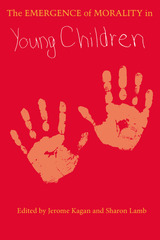 The Emergence of Morality in Young Children
Edited by Jerome Kagan and Sharon Lamb
University of Chicago Press, 1987 "The Emergence of Morality in Young Children is one of very few scholarly books concerning the development of moral tendencies in the early years. In its pages, a diverse group of eminent social and behavioral scientists address this fascinating topic and struggle with issues of inquiry that have persistently plagued this field."—Nancy Eisenberg, Harvard Educational Review
"This is a welcome and immensely provocative book. For those of us who favor ethical theorizing done in close proximity to psychology and anthropology, it provides new and illuminating theory and research relevant to perennial debates about the origins of moral sense, its psychological organization, and the objectivity and unity of the moral."—Owen Flanagan, Ethics
The contributors are Augusto Blasi, Lawrence Blum, Judy Dunn, M. Ann Easterbrooks, Carolyn Pope Edwards, Robert Emde, Carol Gilligan, Charles C. Helwig, William F. Johnson, Jerome Kagan, Melanie Killen, Sharon Lamb, Manamohan Mahapatra, Joan G. Miller, Edward Mueller, Richard A. Shweder, Catherine Snow, Elliot Turiel, and Grant Wiggins.
 The Emergence of Multinational Enterprise: American Business Abroad from the Colonial Era to 1914
Mira Wilkins
Harvard University Press, 1970 The first history of the involvement of American business in direct foreign investment explores a number of pertinent questions: What was the genesis of U.S. business interests in overseas markets? What perspectives guided the financial and social policies of the pioneering companies? In what way did the activities of American business abroad influence U.S. foreign policy?
Mira Wilkins recounts the histories of early foreign investment by such familiar companies as Singer, United Fruit, Edison, American Smelting and Refining, Anaconda Copper, American Telephone, and International Harvester. Refuting a well-established myth, she demonstrates that early American foreign investment was not confined to the extractive industries and utilities, and shows that, by 1914, while America remained a debtor nation in international accounts, a large number of U.S. multinational manufacturing corporations had already come into existence. Indeed, the percentage of the 1914 gross national product attributed to direct foreign investment equals that percentage of the 1966 GNP.
Though wholly self-contained, this works joins with the author’s subsequent volume, The Maturing of Multinational Enterprise: American Business Abroad from 1914 to 1970, to form the first overall history of American business abroad from our earliest times to the late twentieth century.
 The emergence of post-hybrid identities: a comparative analysis of national identity formations in Germany’s hip-hop culture
Marissa Munderloh
University of London Press, 2017 German hip-hop culture is best known for its rap music and rappers’ portrayal of their life in Germany’s urban centres. Not many studies have looked at German hip-hop’s other main art forms, such as graffiti art, dance and music, in conjunction with rap, or considered their joint contribution to the creation and development of German popular culture and contemporary identity. This book breaks new ground by offering a comparative analysis of rappers, DJs, dancers, graffiti artists and their practices in the German cities of Hamburg and Oldenburg. In so doing, it reveals a variety of individual narratives on what it means to be German and to understand how German identities are managed and expressed through hip-hop’s different tools and art forms. It illustrates complex and perhaps even contradictory views of this ever-changing dynamic and the relationship of national belonging, and proposes a new form of identity – the post-hybrid, so contributing to the ongoing debate on cultural belonging and integration in Germany.
 The Emergence of Sexuality: Historical Epistemology and the Formation of Concepts
Arnold I. Davidson
Harvard University Press, 2001 In a book that moves between philosophy and history, and with lasting significance for both, Arnold Davidson elaborates a powerful new method for considering the history of concepts and the nature of scientific knowledge, a method he calls "historical epistemology." He applies this method to the history of sexuality, with important consequences for our understanding of desire, abnormality, and sexuality itself.
In Davidson's view, it was the emergence of a science of sexuality that made it possible, even inevitable, for us to become preoccupied with our true sexuality. Historical epistemology attempts to reveal how this new form of experience that we call "sexuality" is linked to the emergence of new structures of knowledge, and especially to a new style of reasoning and the concepts employed within it. Thus Davidson shows how, starting in the second half of the nineteenth century, a new psychiatric style of reasoning about diseases emerges that makes possible, among other things, statements about sexual perversion that quickly become commonplace in discussions of sexuality.
Considering a wide range of examples, from Thomas Aquinas to Freud, Davidson develops the methodological lessons of Georges Canguilhem and Michel Foucault in order to analyze the history of our experience of normativity and its deviations.
 The Emergence of Social Space: Rimbaud and the Paris Commune
Kristin RossForeword by Terry Eagleton
University of Minnesota Press, 1989
The 1870s in France - Rimbaud’s moment, and the subject of this book - is a decade virtually ignored in most standard histories of France. Yet it was the moment of two significant spatial events: France’s expansion on a global scale, and, in the spring of 1871, the brief existence of the Paris Commune - the construction of revolutionary urban space. Arguing that space, as a social fact, is always political and strategic, Kristen Ross has written a book that is at once history and geography of the Commune’s anarchist culture - its political language and social relations, its values, strategies, and stances.
Central to her analysis of the Commune as social space and oppositional culture is a close textual reading of Arthur Rimbaud’s poetry. His poems - a common thread running through the book - are one set of documents among many in Ross’s recreation of the Communard experience. Rimbaud, Paul Lafargue, and the social geographer Elisee Reclus serve as emblematic figures moving within and on the periphery of the Commune; in their resistance to the logic and economy of a capitalist conception of work, in their challenge to work itself as a term of identity, all three posed a threat to the existing order. Ross looks at these and other emancipator notions as aspects of Communard life, each with an analogous strategy in Rimbaud’s poetry. Applying contemporary theory to a wealth of little-known archival material, she has written a fresh, persuasive, and original book.
The Emergence of the American University
Laurence R. Veysey
University of Chicago Press, 1965 The American university of today is the product of a sudden, mainly unplanned period of development at the close of the nineteenth and the beginning of the twentieth centuries. At that time the university, and with it a recognizably modern style of academic life, emerged to eclipse the older, religiously oriented college. Precedents, formal and informal, were then set which have affected the soul of professor, student, and academic administrator ever since.
What did the men living in this formative period want the American university to become? How did they differ in defining the ideal university? And why did the institution acquire a form that only partially corresponded with these definitions? These are the questions Mr. Veysey seeks to answer.
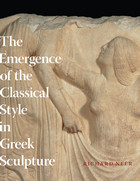 The Emergence of the Classical Style in Greek Sculpture
Richard Neer
University of Chicago Press, 2010
In this wide-ranging study, Richard Neer offers a new way to understand the epoch-making sculpture of classical Greece. Working at the intersection of art history, archaeology, literature, and aesthetics, he reveals a people fascinated with the power of sculpture to provoke wonder in beholders. Wonder, not accuracy, realism, naturalism or truth, was the supreme objective of Greek sculptors. Neer traces this way of thinking about art from the poems of Homer to the philosophy of Plato. Then, through meticulous accounts of major sculpture from around the Greek world, he shows how the demand for wonder-inducing statues gave rise to some of the greatest masterpieces of Greek art. Rewriting the history of Greek sculpture in Greek terms and restoring wonder to a sometimes dusty subject, The Emergence of the Classical Style in Greek Sculpture is an indispensable guide for anyone interested in the art of sculpture or the history of the ancient world.
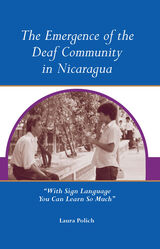 The Emergence of the Deaf Community in Nicaragua: “With Sign Language You Can Learn So Much”
Laura Polich
Gallaudet University Press, 2005 The sudden discovery of Nicaraguan Sign Language (NSL) enthralled scholars worldwide who hoped to witness the evolution of a new language. But controversy erupted regarding the validity of NSL as a genuinely spontaneous language created by young children. Laura Polich’s fascinating book recounts her nine-year study of the Deaf community in Nicaragua and her findings about its formation and that of NSL in its wake.
Polich crafted The Emergence of the Deaf Community in Nicaragua from her copious research in Nicaragua’s National Archives, field observations of deaf pupils in 20 special education schools, polls of the teachers for deaf children about their education and knowledge of deafness, a survey of 225 deaf individuals about their backgrounds and living conditions, and interviews with the oldest members of the National Nicaraguan Association of the Deaf.
Polich found that the use of a “standardized” sign language in Nicaragua did not emerge until there was a community of users meeting on a regular basis, especially beyond childhood. The adoption of NSL did not happen suddenly, but took many years and was fed by multiple influences. She also discovered the process that deaf adolescents used to attain their social agency, which gained them recognition by the larger Nicaraguan hearing society. Her book illustrates tremendous changes during the past 60 years, and the truth in one deaf Nicaraguan’s declaration, “With sign language you can learn so much.”
The Emergence of the English
Susan Oosthuizen
Arc Humanities Press, 2019 This book takes a critical approach to the dominant explanation for the transformation from post-Roman to 'Anglo-Saxon' society in Britain from the fifth to the eighth century: that change resulted from north-west European immigration into Britain. After testing this paradigm, the author explores the increasing amount of evidence for the gradual evolution of late Roman into early medieval England, and suggests some new directions for research that may lead to the development of more holistic explanatory models.
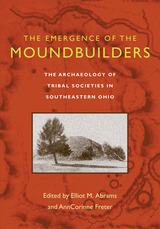 The Emergence of the Moundbuilders: The Archaeology of Tribal Societies in Southeastern Ohio
Elliot M. Abrams
Ohio University Press, 2004 Native American societies, often viewed as unchanging, in fact experienced a rich process of cultural innovation in the millennia prior to recorded history. Societies of the Hocking River Valley in southeastern Ohio, part of the Ohio River Valley, created a tribal organization beginning about 2000 bc.
Edited by Elliot M. Abrams and AnnCorinne Freter, The Emergence of the Moundbuilders: The Archaeology of Tribal Societies in Southeastern Ohio presents the process of tribal formation and change in the region based on analyses of all available archaeological data from the Hocking River Valley. Drawing on the work of scholars in archaeology, anthropology, geography, geology, and botany, the collection addresses tribal society formation through such topics as the first pottery made in the valley, aggregate feasting by nomadic groups, the social context for burying their dead in earthen mounds, the formation of religious ceremonial centers, and the earliest adoption of corn.
Providing the most current research on indigenous societies in the Hocking Valley, The Emergence of the Moundbuilders is distinguished by its broad, comparative overview of tribal life.
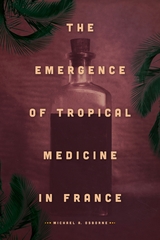 The Emergence of Tropical Medicine in France
Michael A. Osborne
University of Chicago Press, 2014 The Emergence of Tropical Medicine in France examines the turbulent history of the ideas, people, and institutions of French colonial and tropical medicine from their early modern origins through World War I. Until the 1890s colonial medicine was in essence naval medicine, taught almost exclusively in a system of provincial medical schools built by the navy in the port cities of Brest, Rochefort-sur-Mer, Toulon, and Bordeaux. Michael A. Osborne draws out this separate species of French medicine by examining the histories of these schools and other institutions in the regional and municipal contexts of port life. Each site was imbued with its own distinct sensibilities regarding diet, hygiene, ethnicity, and race, all of which shaped medical knowledge and practice in complex and heretofore unrecognized ways.
Osborne argues that physicians formulated localized concepts of diseases according to specific climatic and meteorological conditions, and assessed, diagnosed, and treated patients according to their ethnic and cultural origins. He also demonstrates that regions, more so than a coherent nation, built the empire and specific medical concepts and practices. Thus, by considering tropical medicine’s distinctive history, Osborne brings to light a more comprehensive and nuanced view of French medicine, medical geography, and race theory, all the while acknowledging the navy’s crucial role in combating illness and investigating the racial dimensions of health.
 Emergency Broadcasting & 1930'S Am Radio
Edward Miller
Temple University Press, 2002 The voice we hear on the radio—the voice with no body attached—is a key element in the history of media in the twentieth century. Before television and the internet, there was radio; and much of what defined the makeup of these newer media was influenced by the way radio was broadcast to people and the way people listened to it.Emergency Broadcasting focuses on key moments in the history of early radio in order to come to an understanding of the role voice played in radio to describe national crises, a fictional invasion from outer space, and general entertainment. Taking the Hindenburg disaster, The War of the Worlds hoax, Franklin Roosevelt's Fireside Chats, and the serial mystery The Shadow as his focal points, Edward Miller illustrates how the radio, for the first time, instantly communicated to a mass audience, and how that communication—where the voice counts more than the image—is still at work today in television and the World Wide Web.Theoretically sophisticated, yet grounded in historical detail, Emergency Broadcasting offers a unique examination of radio and at the same time develops a complex understanding of the media whose birth is owed to the innovations—and disembodied power—established by it.
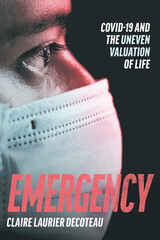 Emergency: COVID-19 and the Uneven Valuation of Life
Claire Laurier Decoteau
University of Chicago Press, 2024 A forceful critique of how and why states failed to protect marginalized communities in their responses to the COVID-19 pandemic and the implications of ignoring the existing emergencies that exacerbated the pandemic’s devastating effects.
The COVID-19 pandemic inaugurated a state of emergency unprecedented for most Americans. Some could observe this emergency from the relative safety of their homes, but those in marginalized communities, without access to the same privileges, were forced to risk their health and well-being.
In Emergency, sociologist Claire Laurier Decoteau documents and theorizes the emergencies of COVID-19 by looking at the experiences of Chicagoans and the policies that shaped their lives. She describes the uneven racial impact of COVID-19 on Black and Latinx Chicagoans as a crisis within a crisis, caused by a convergence of emergencies: a state of emergency that protected white supremacy and wealth, the slow emergencies racially marginalized populations have faced for decades due to the long-term gutting of care infrastructure and deindustrialization, and the sacrifice “essential workers” were asked to make to protect the United States economy. As Decoteau shows, the city’s “racial equity” project used data to determine which communities would be given scarce resources, but once positivity or death rates declined, resources were retracted and redistributed elsewhere. City officials thus attempted to manage these converging emergencies by manipulating epidemiological data and orchestrating systems for interpreting that data. Decoteau makes clear that the emergencies precipitated by COVID-19 long predated the pandemic, and that we will continue to live with their compounding crises if we do not tackle their structural underpinnings.
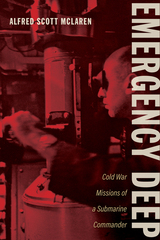 Emergency Deep: Cold War Missions of a Submarine Commander
Alfred Scott McLaren
University of Alabama Press, 2021 Conveys in dramatic detail the high-risk, covert operations of a nuclear attack submarine during the zenith of the Cold War
Captain Alfred Scott McLaren served as commander of the USS Queenfish (SSN 651) from September 1969 to May 1973, the very height of the Cold War. As commander, McLaren led at least six major clandestine operations, including the first-ever exploration of the entire Siberian Continental Shelf: a perilous voyage detailed in his previous book Unknown Waters.
Emergency Deep: Cold War Missions of a Submarine Commander conveys the entire spectrum of Captain McLaren’s experiences commanding the USS Queenfish, mainly in the waters of the Russian Far East and also off Vietnam. McLaren offers a riveting and deeply human story that illuminates the intensity and pressures of commanding a nuclear attack submarine in some of the most difficult circumstances imaginable.
Relying on his own notes and records, as well as discussions with former officers and shipmates, McLaren focuses on operational matters both great and small. He recounts his unique perspectives on attack-submarine tactics and exploratory techniques in high-risk or uncharted areas, matters of leadership and team-building and the morale of his crews, and the innumerable and often unforeseen ways his philosophy of command played out on a day-to-day basis, with consequences that ran the gamut from the mundane to the dire and life-threatening.
Readers are also treated to significant new information and insight on submarine strategy, maneuvers, and culture. Such details illuminate and bring to life, with both great humor and gravitas, the intensity and pressures on those engaged in covert missions on nuclear attack submarines.
 Emergency Presidential Power: From the Drafting of the Constitution to the War on Terror
Chris Edelson; Foreword by Louis Fisher
University of Wisconsin Press, 2013 Can a U.S. president decide to hold suspected terrorists indefinitely without charges or secretly monitor telephone conversations and e-mails without a warrant in the interest of national security? Was the George W. Bush administration justified in authorizing waterboarding? Was President Obama justified in ordering the killing, without trial or hearing, of a U.S. citizen suspected of terrorist activity? Defining the scope and limits of emergency presidential power might seem easy—just turn to Article II of the Constitution. But as Chris Edelson shows, the reality is complicated. In times of crisis, presidents have frequently staked out claims to broad national security power. Ultimately it is up to the Congress, the courts, and the people to decide whether presidents are acting appropriately or have gone too far. Drawing on excerpts from the U.S. Constitution, Supreme Court opinions, Department of Justice memos, and other primary documents, Edelson weighs the various arguments that presidents have used to justify the expansive use of executive power in times of crisis. Emergency Presidential Power uses the historical record to evaluate and analyze presidential actions before and after the terrorist attacks of September 11, 2001. The choices of the twenty-first century, Edelson concludes, have pushed the boundaries of emergency presidential power in ways that may provide dangerous precedents for current and future commanders-in-chief.
Winner, Crader Family Book Prize in American Values, Department of History and Crader Family Endowment for American Values, Southeast Missouri State University
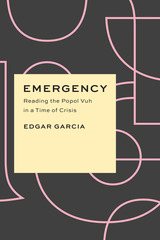 Emergency: Reading the Popol Vuh in a Time of Crisis
Edgar Garcia
University of Chicago Press, 2022 Nine short essays exploring the K’iche’ Maya story of creation, the Popol Vuh.
Written during the lockdown in Chicago in the depths of the COVID-19 pandemic, these essays consider the Popol Vuh as a work that was also written during a time of feverish social, political, and epidemiological crisis as Spanish missionaries and colonial military deepened their conquest of indigenous peoples and cultures in Mesoamerica. What separates the Popol Vuh from many other creation texts is the disposition of the gods engaged in creation. Whereas the book of Genesis is declarative in telling the story of the world’s creation, the Popol Vuh is interrogative and analytical: the gods, for example, question whether people actually need to be created, given the many perfect animals they have already placed on earth.
Emergency uses the historical emergency of the Popol Vuh to frame the ongoing emergencies of colonialism that have surfaced all too clearly in the global health crisis of COVID-19. In doing so, these essays reveal how the authors of the Popol Vuh—while implicated in deep social crisis—nonetheless insisted on transforming emergency into scenes of social, political, and intellectual emergence, translating crisis into creativity and world creation.
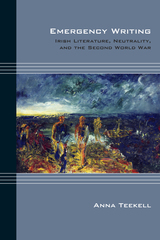 Emergency Writing: Irish Literature, Neutrality, and the Second World War
Anna Teekell
Northwestern University Press, 2018 Taking seriously Ireland’s euphemism for World War II, “the Emergency,” Anna Teekell’s Emergency Writing asks both what happens to literature written during a state of emergency and what it means for writing to be a response to an emergency.
Anchored in close textual analysis of works by Samuel Beckett, Elizabeth Bowen, Flann O’Brien, Louis MacNeice, Denis Devlin, and Patrick Kavanagh, and supported by archival material and historical research, Emergency Writing shows how Irish late modernism was a response to the sociopolitical conditions of a newly independent Irish Free State and to a fully emerged modernism in literature and art. What emerges in Irish writing in the wake of Independence, of the Gaelic Revival, of Yeats and of Joyce, is a body of work that invokes modernism as a set of discursive practices with which to counter the Free State’s political pieties.
Emergency Writing provides a new approach to literary modernism and to the literature of conflict, considering the ethical dilemma of performing neutrality—emotionally, politically, and rhetorically—in a world at war.
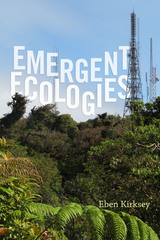 Emergent Ecologies
Eben Kirksey
Duke University Press, 2015 In an era of global warming, natural disasters, endangered species, and devastating pollution, contemporary writing on the environment largely focuses on doomsday scenarios. Eben Kirksey suggests we reject such apocalyptic thinking and instead find possibilities in the wreckage of ongoing disasters, as symbiotic associations of opportunistic plants, animals, and microbes are flourishing in unexpected places. Emergent Ecologies uses artwork and contemporary philosophy to illustrate hopeful opportunities and reframe key problems in conservation biology such as invasive species, extinction, environmental management, and reforestation. Following the flight of capital and nomadic forms of life—through fragmented landscapes of Panama, Costa Rica, and the United States—Kirksey explores how chance encounters, historical accidents, and parasitic invasions have shaped present and future multispecies communities. New generations of thinkers and tinkerers are learning how to care for emergent ecological assemblages—involving frogs, fungal pathogens, ants, monkeys, people, and plants—by seeding them, nurturing them, protecting them, and ultimately letting go.
 Emergent Forms of Life and the Anthropological Voice
Michael M. J. Fischer
Duke University Press, 2003 Anthropology as Cultural Critique helped redefine cultural anthropology in the 1980s. Now, with Emergent Forms of Life and the Anthropological Voice, pathbreaking scholar Michael M. J. Fischer moves the discussion to a consideration of the groundwork laid in the 1990s for engagements with the fast-changing worlds of technoscience, telemedia saturation, and the reconstruction of societies after massive trauma. Fischer argues that new methodologies and conceptual tools are necessitated by the fact that cultures of every kind are becoming more complex and differentiated at the same time that globalization and modernization are bringing them into exponentially increased interaction. Anthropology, Fischer explains, now operates in a series of third spaces well beyond the nineteenth- and twentieth-century dualisms of us/them, primitive/civilized, East/West, or North/South. He contends that more useful paradigms—such as informatics, multidimensional scaling, autoimmunity, and visual literacy beyond the frame—derive from the contemporary sciences and media technologies. A vigorous advocate of the anthropological voice and method, Fischer emphasizes the ethical dimension of cultural anthropology. Ethnography, he suggests, is uniquely situated to gather and convey observations fundamental to the creation of new social institutions for an evolving civil society. In Emergent Forms of Life and the Anthropological Voice Fischer considers a dazzling array of subjects—among them Iranian and Polish cinema, cyberspace, autobiographical and fictional narrative, and genomic biotechnologies—and, in the process, demonstrates a cultural anthropology for a highly networked world. He lays the groundwork for a renewed and powerful twenty-first-century anthropology characterized by a continued insistence on empirical fieldwork, engagements with other disciplines, and dialogue with interlocutors around the globe.
 Emergent Genders: Living Otherwise in Tokyo's Pink Economies
Michelle H. S. Ho
Duke University Press, 2025 In Emergent Genders, Michelle H. S. Ho traces the genders manifesting alongside Japanese popular culture in Akihabara, an area in Tokyo renowned for the fandom and consumption of anime, manga, and games. Drawing on ethnographic fieldwork in josō and dansō cafe-and-bars, establishments where male-to-female and female-to-male crossdressing is prevalent, Ho shows how their owners, employees, and customers creatively innovate what she calls emergent genders—new practices, categories, and ways of being stemming from the simultaneous fracturing, contestations, and (re)imaginations of older forms of gender and sexual variance in Japan. Such emergent genders initiate new markets for alternative categories of expression and subjectivity to thrive in a popular cultural hub like Akihabara instead of Tokyo’s gay and lesbian neighborhood of Shinjuku Ni-chōme. By rethinking identitarian models of gender and sexuality, reconfiguring the significance of capitalism for trans studies and queer theory, and decentering theoretical frameworks incubated in a predominantly United States academic context, Ho offers new ways of examining how trans and gender nonconforming individuals may survive and flourish under capitalism.
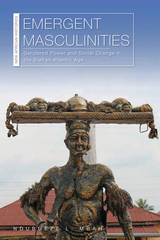 Emergent Masculinities: Gendered Power and Social Change in the Biafran Atlantic Age
Ndubueze L. Mbah
Ohio University Press, 2019 In Emergent Masculinities, Ndubueze L. Mbah argues that the Bight of Biafra region’s Atlanticization—or the interaction between regional processes and Atlantic forces such as the slave trade, colonialism, and Christianization—between 1750 and 1920 transformed gender into the primary mode of social differentiation in the region. He incorporates over 250 oral narratives of men and women across a range of social roles and professions with material culture practices, performance traditions, slave ship data, colonial records, and more to reveal how Africans channeled the socioeconomic forces of the Atlantic world through their local ideologies and practices. The gendered struggles over the means of social reproduction conditioned the Bight of Biafra region’s participation in Atlantic systems of production and exchange, and defined the demography of the region’s forced diaspora. By looking at male and female constructions of masculinity and sexuality as major indexes of social change, Emergent Masculinities transforms our understanding of the role of gender in precolonial Africa and fills a major gap in our knowledge of a broader set of theoretical and comparative issues linked to the slave trade and the African diaspora.
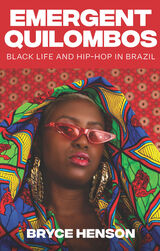 Emergent Quilombos: Black Life and Hip-Hop in Brazil
Bryce Henson
University of Texas Press, 2023 2024 Best Book Award, National Communication Association, Ethnography Division
2024 Roberto Reis Book Prize, First Book category, Brazilian Studies Association
2024 Outstanding Book Award, National Communication Association, Critical and Cultural Studies Division
2024 International and Intercultural Best Book Award, National Communication Association, International and Intercultural Division How disenfranchised Black Brazilians use hip-hop to reinvigorate the Black radical tradition. Known as Black Rome, Salvador da Bahia, Brazil, is a predominantly Black city. The local art, food, and dance are closely linked to the population’s African roots. Yet many Black Brazilian residents are politically and economically disenfranchised. Bryce Henson details a culture of resistance and activism that has emerged in response, expressed through hip-hop and the social relations surrounding it. Based on years of ethnographic research, Emergent Quilombos illuminates how Black hip-hop artists and their circles contest structures of anti-Black racism by creating safe havens and alternative social, cultural, and political systems that serve Black people. These artists valorize and empower marginalized Black peoples through song, aesthetics, media, visual art, and community action that emphasize diasporic connections, ancestrality, and Black identifications in opposition to the anti-Black Brazilian nation. In the process, Henson argues, the Salvador hip-hop scene has reinvigorated and reterritorialized a critical legacy of Black politicocultural resistance: the quilombo, maroon communities of Black fugitives who refused slavery as a way of life, gathered away from the spaces of their oppression, protected their communities, and nurtured Black life in all its possibilities.
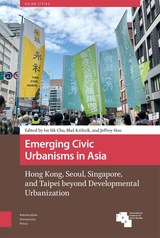 Emerging Civic Urbanisms in Asia: Hong Kong, Seoul, Singapore, and Taipei beyond Developmental Urbanization
Im Sik Cho
Amsterdam University Press, 2022 In parts of Asia, citizens are increasingly involved in shaping their neighbourhoods and cities, representing a significant departure from earlier state-led or market-driven urban development. These emerging civic urbanisms are a result of an evolving relationship between the state and civil society. The contributions in this volume provide critical insights into how the changing state–civil society relationship affects the recent surge of civic urbanism in Hong Kong, Seoul, Singapore, and Taipei, and the authors present eighteen cases of grassroots activism and resistance, collaboration and placemaking, neighbourhood community building, and self-organization and commoning in these cities. Exploring how citizen participation and state–civil society partnerships contribute to more resilient and participatory neighbourhoods and cities, the authors use the concept of civic urbanisms not only as a conceptual framework to understand the ongoing social and urban change but as an aspirational model of urban governance for cities in Asia and beyond.
Emerging CMOS Capacitive Sensors for Biomedical Applications: A multidisciplinary approach
Ebrahim Ghafar-Zadeh
The Institution of Engineering and Technology, 2021 CMOS-based sensors offer significant advantages to life science applications, such as non-invasive long-term recordings, fast responses and label-free processes. They have been widely applied in many biological and medical fields for the study of living cell samples such as neural cell recording and stimulation, monitoring metabolic activity, cell manipulation, and extracellular pH monitoring. Compared to other sensing techniques, capacitive sensors are low-complexity, high-precision, label-free sensing methods for monitoring cellular activities such as cell viability, proliferation and morphology.
Emerging Evolutionary Algorithms for Antennas and Wireless Communications
Sotirios K. Goudos
The Institution of Engineering and Technology, 2021 Several evolutionary algorithms (EAs) have emerged in recent decades that mimic the behaviour and evolution of biological entities. EAs are widely used to solve single and multi-objective optimization engineering problems. EAs have also been applied to a variety of microwave components, antenna design, radar design, and wireless communications problems. These techniques, among others, include genetic algorithms (GAs), evolution strategies (ES), particle swarm optimization (PSO), differential evolution (DE), and ant colony optimization (ACO). In addition, new innovative algorithms that are not only biology-based but also physics-based or music-based are also emerging, as are hybrid combinations of EAs.
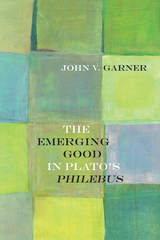 The Emerging Good in Plato's Philebus
John V. Garner
Northwestern University Press, 2017 Plato’s Philebus presents a fascinating dialogue between the life of the mind and the life of pleasure. While Socrates decisively prioritizes the life of reason, he also shows that certain pleasures contribute to making the good life good. The Emerging Good in Plato’s "Philebus" argues that the Socratic pleasures of learning emphasize, above all, the importance of being open to change.
John V. Garner convincingly refines previous interpretations and uncovers a profound thesis in the Philebus: genuine learners find value not only in stable being but also in the process of becoming. Further, since genuine learning arises in pluralistic communities where people form and inform one another, those who are truly open to learning are precisely those who actively shape the betterment of humanity.
The Emerging Good in Plato’s "Philebus" thus connects the Philebus’s grand philosophical ideas about the order of values, on the one hand, to its intimate and personal account of the experience of learning, on the other. It shows that this dialogue, while agreeing broadly with themes in more widely studied works by Plato such as the Republic, Gorgias, and Phaedo, also develops a unique way of salvaging the whole of human life, including our ever-changing nature.
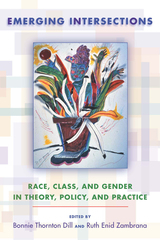 Emerging Intersections: Race, Class, and Gender in Theory, Policy, and Practice
Dill, Bonnie Thornton
Rutgers University Press, 2009 The United States is known as a "melting pot" yet this mix tends to be volatile and contributes to a long history of oppression, racism, and bigotry. Emerging Intersections, an anthology of ten previously unpublished essays, looks at the problems of inequality and oppression from new angles and promotes intersectionality as an interpretive tool that can be utilized to better understand the ways in which race, class, gender, ethnicity, and other dimensions of difference shape our lives today. The book showcases innovative contributions that expand our understanding of how inequality affects people of color, demonstrates the ways public policies reinforce existing systems of inequality, and shows how research and teaching using an intersectional perspective compels scholars to become agents of change within institutions. By offering practical applications for using intersectional knowledge, Emerging Intersections will help bring us one step closer to achieving positive institutional change and social justice.
Emerging Issues and Trends in Education
Theodore S. Ransaw
Michigan State University Press, 2017 As classrooms across the globe become increasingly more diverse, it is imperative that educators understand how to meet the needs of students with varying demographic backgrounds. Emerging Issues and Trends in Education presents case studies from academics who have all at one point been teachers in K–12 classrooms, addressing topics such as STEM as well as global issues related to race, gender education, education policy, and parental engagement. The contributors take an international approach, including research about Nigerian, Chinese, Native American, and Mexican American classrooms. With a focus on multidisciplinary perspectives, Emerging Issues and Trends in Education is reflective of the need to embrace different ways of looking at problems to improve education for all students.
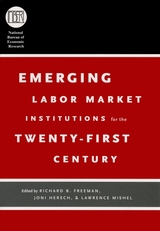 Emerging Labor Market Institutions for the Twenty-First Century
Edited by Richard B. Freeman, Joni Hersch, and Lawrence Mishel
University of Chicago Press, 2005 Private sector unionism is in decline in the United States. As a result, labor advocates, community groups, nongovernmental organizations, and individuals concerned with the well-being of workers have sought to develop alternative ways to represent workers' interests. Emerging Labor Market Institutions for the Twenty-First Century provides the first in-depth assessment of how effectively labor market institutions are responding to this drastically altered landscape.
This important volume provides case studies of new labor market institutions and new directions for existing institutions. The contributors examine the behavior and impact of new organizations that have formed to solve workplace problems and to bolster the position of workers. They also document how unions employ new strategies to maintain their role in the economic system. While non-union institutions are unlikely to fill the gap left by the decline of unions, the findings suggest that emerging groups and unions might together improve some dimensions of worker well-being. Emerging Labor Market Institutions is the story of workers and institutions in flux, searching for ways to represent labor in the new century.
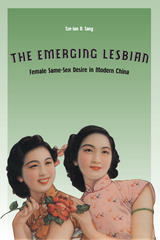 The Emerging Lesbian: Female Same-Sex Desire in Modern China
Tze-Lan D. Sang
University of Chicago Press, 2003 In early twentieth-century China, age-old traditions of homosocial and homoerotic relationships between women suddenly became an issue of widespread public concern. Discussed formerly in terms of friendship and sisterhood, these relationships came to be associated with feminism, on the one hand, and psychobiological perversion, on the other—a radical shift whose origins have long been unclear.
In this first ever book-length study of Chinese lesbians, Tze-lan D. Sang convincingly ties the debate over female same-sex love in China to the emergence of Chinese modernity. As women's participation in social, economic, and political affairs grew, Sang argues, so too did the societal significance of their romantic and sexual relations. Focusing especially on literature by or about women-preferring women, Sang traces the history of female same-sex relations in China from the late imperial period (1600-1911) through the Republican era (1912-1949). She ends by examining the reemergence of public debate on lesbians in China after Mao and in Taiwan after martial law, including the important roles played by globalization and identity politics.
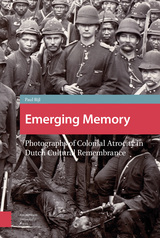 Emerging Memory: Photographs of Colonial Atrocity in Dutch Cultural Remembrance
Paul Bijl
Amsterdam University Press, 2015 This incisive volume brings together postcolonial studies, visual culture and cultural memory studies to explain how the Netherlands continues to rediscover its history of violence in colonial Indonesia. Dutch commentators have frequently claimed that the colonial past and especially the violence associated with it has been 'forgotten' in the Netherlands. Uncovering 'lost' photographs and other documents of violence has thereby become a recurring feature aimed at unmasking a hidden truth.
The author argues that, rather than absent, such images have been consistently present in the Dutch public sphere and have been widely available in print, on television and now on the internet. Emerging Memory: Photographs of Colonial Atrocity in Dutch Cultural Remembrance shows that between memory and forgetting there is a haunted zone from which pasts that do not fit the stories nations live by keep on emerging and submerging while retaining their disturbing presence.
 An Emerging Modern World: 1750–1870
Sebastian Conrad
Harvard University Press, 2018 For as long as there have been nations, there has been an “international”—a sphere of cross-border relations. But for most of human history, this space was sparsely occupied. States and regions were connected by long-distance commerce and the spasms of war, yet in their development they remained essentially separate. The century after 1750 marked a major shift. Fleeting connection gave way to durable integration. Culture, politics, and society were increasingly, and indelibly, entangled across continents. An Emerging Modern World charts this transformative period, addressing major questions about the roots of the present from a distinctly global perspective.
Why, for instance, did industrialization begin in England and not in China? Was there early capitalist development outside of the West? Was the Enlightenment exclusively a European event? Led by editors Sebastian Conrad and Jürgen Osterhammel, a distinguished group of historians tackles these issues, along with the roles of nomads and enslaved people in fostering global integration, the development of a bourgeoisie outside Euro-America, Hinduism’s transformation from local practices into a universal system, the invention of pan-Islamic identity, and the causes and effects of the revolution in time regimes. The world appeared to be undergoing such a radical renewal that the impression of an epochal watershed was widespread.
This fourth volume in the six-volume series A History of the World engages the political, economic, social, and intellectual ferment of the eighteenth and nineteenth centuries outside Europe and North America. In doing so, it bears witness to the birth of the modern world.
Emerging Socialities in 21st Century Healthcare
Edited by Bernhard Hadolt and Anita Hardon
Amsterdam University Press, 2017 The landscape of healthcare is changing rapidly, both on an organisational and a technological level. This book gathers medical anthropologists to examine the ways that both patients and health care workers are being affected by new policies, market, and technologies. Contributors cover a wide range of topics, including vaccination, disability, migration, and self-medication, making clear that not only are changing circumstances leading to the emergence of new socialities, but they are also driving new ethics and moralities.
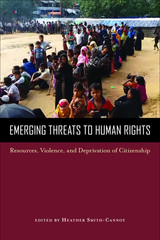 Emerging Threats to Human Rights: Resources, Violence, and Deprivation of Citizenship
Heather Smith-Cannoy
Temple University Press, 2019 As widespread environmental degradation threatens the basic human rights of a large proportion of the world’s population, we are also confronting the worst migration crisis in the modern era. Emerging Threats to Human Rights searches among the interrelated causes of these overlapping crises. The editor and contributors to this timely anthology assess how environmental resources, state violence, and the deprivation of nationality/citizenship are linked to gain a better understanding of how human rights abuses intersect with patterns of migration. As some refugees flee violence at home, they arrive in an asylum country only to experience violence at the hands of the native population. Likewise, those denied citizenship rights in their country become vulnerable to human traffickers and other rights violations when they flee. Bringing together scholars of resource dilemmas, violence, and citizenship as well as lawyers and human rights practitioners, Emerging Threats to Human Rights begins by identifying the core causes of human rights violations confronting our world today. Chapters also consider whether and to what extent these emerging threats to human rights serve as drivers of displacement.
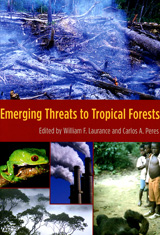 Emerging Threats to Tropical Forests
Edited by William F. Laurance and Carlos A. Peres
University of Chicago Press, 2006 Emerging Threats to Tropical Forests reveals the remarkably diverse panoply of perils to tropical forests and their biota, with particular emphasis on recent dangers. William F. Laurance and Carlos A. Peres identify four categories of emerging threats: those that have only recently appeared, such as the virulent chytrid fungus that is decimating rainforest amphibians throughout the tropical world; those that are growing rapidly in importance, like destructive surface fires; those that are poorly understood, namely global warming and other climatic and atmospheric changes; and environmental synergisms, whereby two or more simultaneous threats—such as habitat fragmentation and wildfires, or logging and hunting—can dramatically increase local extinction of tropical species. In addition to documenting the vulnerability of tropical rainforests, the volume focuses on strategies for mitigating and combating emerging threats. A timely and compelling book intended for researchers, students, and conservation practitioners, Emerging Threats to Tropical Forests will interest anyone concerned about the fate of the world’s most threatened tropical ecosystems.
 Emerging Trends in Continental Philosophy
Edited by Todd May
University of Chicago Press, 2010 From Kant to Kierkegaard, from Hegel to Heidegger, continental philosophers have indelibly shaped the trajectory of Western thought since the eighteenth century. Although much has been written about these monumental thinkers, students and scholars lack a definitive guide to the entire scope of the continental tradition. The most comprehensive reference work to date, this eight-volume History of Continental Philosophy will both encapsulate the subject and reorient our understanding of it. Beginning with an overview of Kant’s philosophy and its initial reception, the History traces the evolution of continental philosophy through major figures as well as movements such as existentialism, phenomenology, hermeneutics, and poststructuralism. The final volume outlines the current state of the field, bringing the work of both historical and modern thinkers to bear on such contemporary topics as feminism, globalization, and the environment. Throughout, the volumes examine important philosophical figures and developments in their historical, political, and cultural contexts.
The first reference of its kind, A History of Continental Philosophy has been written and edited by internationally recognized experts with a commitment to explaining complex thinkers, texts, and movements in rigorous yet jargon-free essays suitable for both undergraduates and seasoned specialists. These volumes also elucidate ongoing debates about the nature of continental and analytic philosophy, surveying the distinctive, sometimes overlapping characteristics and approaches of each tradition. Featuring helpful overviews of major topics and plotting road maps to their underlying contexts, A History of Continental Philosophy is destined to be the resource of first and last resort for students and scholars alike.
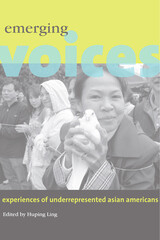 Emerging Voices: Experiences of Underrepresented Asian Americans
Ling, Huping
Rutgers University Press, 2008 While a growing number of popular and scholarly works focus on Asian Americans, most are devoted to the experiences of larger groups such as Chinese, Japanese, Korean, Filipino, and Indian Americans. As the field grows, there is a pressing need to understand the smaller and more recent immigrant communities. Emerging Voices fills this gap with its unique and compelling discussion of underrepresented groups, including Burmese, Indonesian, Mong, Hmong, Nepalese, Romani, Tibetan, and Thai Americans. Unlike the earlier and larger groups of Asian immigrants to America, many of whom made the choice to emigrate to seek better economic opportunities, many of the groups discussed in this volume fled war or political persecution in their homeland. Forced to make drastic transitions in America with little physical or psychological preparation, questions of “why am I here,” “who am I,” and “why am I discriminated against,” remain at the heart of their post-emigration experiences. Bringing together eminent scholars from a variety of disciplines, this collection considers a wide range of themes, including assimilation and adaptation, immigration patterns, community, education, ethnicity, economics, family, gender, marriage, religion, sexuality, and work.
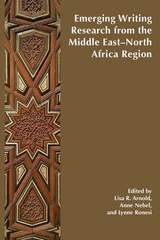 Emerging Writing Research from the Middle East-North Africa Region
Lisa Arnold
University Press of Colorado, 2017 While events in the Middle East-North Africa region dominate world news, it is an area little understood by the rest of the world—not only historically, politically, and culturally but also within the discipline of Rhetoric and Composition and Second Language Writing. The editors and contributors to this collection share scholarship that addresses how writing programs and writing-across-the-curriculum initiatives—in the region and outside of it—are responding to the increasing globalization of higher education and contributing to international discussions about World Englishes and other language varieties as well as translingual approaches to writing and writing pedagogy. Contributors: Samer Annous, James P. Austin, William DeGenaro, Rula Diab, Michele Eodice, Juheina Fakhreddine, Aneta Hayes, Tom Highley, Amy Hodges, Rima Iskandarani, Najla Jarkas, Holly Johnson, Brenda Kent, Malakeh Raif Khoury-Khayat, Nasser Mansour, Ryan T. Miller, Maureen O’Day Nicolas, Saman Hussein Omar, Silvia Pessoa, Mysti Rudd, Zane Siraj Sinno, Michael Telafici, Connie Kendall Theado, Martha Townsend, Hacer Hande Uysal, Margaret Willard-Traub
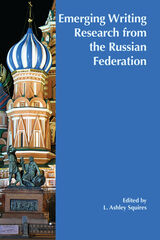 Emerging Writing Research from the Russian Federation
edited by L. Ashley Squires
University Press of Colorado, 2022 In the early 2010s, Russian institutions of higher education began responding to the need to internationalize Russian academia through faculty publications and academic mobility programs. The promotion of academic writing courses and writing centers based on international models has been a critical part of that effort, leading to the rapid growth of a field of teaching and scholarship that had not received much attention. This book explores these developments through contributions from individuals with experience in Russian higher education, who write about the rationale for importing and adapting international models of academic writing and rhetoric and composition, the role of the English and the Russian language in the development of this field, and the specific needs of faculty and student writers in Russia. We expect this book to be of interest to scholars investigating the internationalization of higher education, the role of English in the international dissemination of research, and programs developedspecifically for multilingual faculty writers, who are a core constituency for writing services in Russia. This book is also available as an open access ebook through the WAC Clearinghouse.
 Emerson
Lawrence Buell
Harvard University Press, 2004 "An institution is the lengthened shadow of one man," Ralph Waldo Emerson once wrote--and in this book, the leading scholar of New England literary culture looks at the long shadow Emerson himself has cast, and at his role and significance as a truly American institution. On the occasion of Emerson's 200th birthday, Lawrence Buell revisits the life of the nation's first public intellectual and discovers how he became a "representative man."
Born into the age of inspired amateurism that emerged from the ruins of pre-revolutionary political, religious, and cultural institutions, Emerson took up the challenge of thinking about the role of the United States alone and in the world. With characteristic authority and grace, Buell conveys both the style and substance of Emerson's accomplishment--in his conception of America as the transplantation of Englishness into the new world, and in his prodigious work as writer, religious thinker, and philosopher. Here we see clearly the paradoxical key to his success, the fierce insistence on independence that acted so magnetically upon all around him. Steeped in Emerson's writings, and in the life and lore of the America of his day, Buell's book is as individual--and as compelling--as its subject. At a time when Americans and non-Americans alike are struggling to understand what this country is, and what it is about, Emerson gives us an answer in the figure of this representative American, an American for all, and for all times.
Emerson and Asia
Frederic Ives Carpenter
Harvard University Press Within the mind of Emerson the East and the West met to produce a new philosophy of life. He was one of the first to explore the wisdom of Asia and to interpret it to the modern world. This book tells of his exploration and then describes something of the mystery he found. In the successive chapters his various borrowings and ideas are related to their Oriental originals. Throughout, the author has treated a vague and imaginative subject as simply and directly as possible, without letting escape the imagination and the mystery.
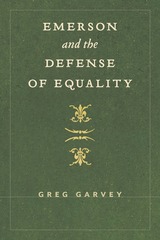 Emerson and the Defense of Equality
Greg Garvey
University of Massachusetts Press, 2025 Arguing for equality as the necessary foundation of liberty
During Ralph Waldo Emerson’s lifetime, the idea of universal human equality was under intensive assault. Repeatedly—in contexts ranging from slavery, to marriage, to politics and workers’ rights—Americans of the time were being told that equality was an obsolete ideal and that the future would belong to those who accepted the hard truth that liberty lies not in egalitarian values but in hierarchies of domination and submission. Greg Garvey’s Emerson and the Defense of Equality focuses on Emerson as a real-time defender of equality during the antebellum culture wars.
In contrast to studies that treat individual liberty as Emerson’s primary concern, Garvey argues that Emerson’s works define a broad and sustained defense of equality as the necessary foundation of liberty. When read as part of a debate about equality, Emerson’s Nature is a treatise on individuality and the common weal; his anti-slavery speeches and English Traits advance evolutionary theories to rebut polygenesist arguments for white supremacy; the essays “Love” and “Domestic Life” challenge gender spheres and explore equality in marriage, friendship, and citizenship. As Emerson speculates on the future, “Politics” and “The Young American” anticipate a “beneficent socialism” in which human rights will always have priority over property rights. In his career-long effort to defend a threatened ideal, Emerson develops an aspirational vision of society that understands equality to be a fundamental aspect of liberty.
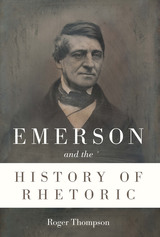 Emerson and the History of Rhetoric
Roger Thompson
Southern Illinois University Press, 2017 Much has been written about Ralph Waldo Emerson’s fundamental contributions to American literature and culture as an essayist, philosopher, lecturer, and poet. But despite wide agreement among literary and rhetorical scholars on the need for further study of Emerson as a rhetorical theorist, little has been published on the subject. This book fills that gap, reenvisioning Emerson’s work through his significant engagement with rhetorical theory in the course of his career and providing a more profound understanding of Emerson’s influence on American ideology.
Moving beyond dominant literary critical thinking, Thompson argues that for Emerson, rhetoric was both imaginative and nonsystematic. This book covers the influences of rhetoricians from a range of periods on Emerson’s model of rhetoric. Drawing on Emerson’s manuscript notes, journal entries, and some of his rarely discussed essays and lectures as well as his more famous works, the author bridges the divide between literary and rhetorical studies, expanding our understanding of this iconic nineteenth-century man of letters.
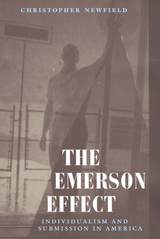 The Emerson Effect: Individualism and Submission in America
Christopher Newfield
University of Chicago Press, 1995 This book presents a revisionist account of Ralph Waldo Emerson's influential thought on individualism, in particular his political psychology.
Christopher Newfield analyzes the interplay of liberal and authoritarian impulses in Emerson's work in various domains: domestic life, the changing New England economy, theories of poetic language, homoerotic friendship, and racial hierarchy. Focusing on neglected later writings, Newfield shows how Emerson explored the tensions between autonomy and community—and consistently resolved these tensions by "abandoning crucial elements of both" and redefining autonomy as a kind of liberating subjection. He argues that in Emersonian individualism, self-determination is accompanied by submission to authority, and examines the influence of this submissive individualism on the history of American liberalism. In a provocative reading of Emerson's early and neglected later works, Newfield analyzes Emerson's emphasis on collective, or "corporate", world-building, rather than private possession. Tracing the development of this corporate individualism, he illuminates contradictions in Emerson's political outlook, and the conjunctions of liberal and authoritarian ideology they produced.
 Emerson in His Journals
Ralph Waldo Emerson
Harvard University Press, 1982 This long-awaited volume offers the general reader the heart of Emerson’s journals, that extraordinary series of diaries and notebooks in which he poured out his thoughts for more than fifty years, beginning with the “luckless ragamuffin ideas” of his college days.
Emerson as revealed in his journals is more spontaneous, more complex, more human and appealing than he appears in the published works. This man is the seeker rather than the sage; he records the turmoil, struggle, and questioning that preceded the serene and confident affirmations of the essays. He is honest, earthy, tough-minded, self-critical (“I am a lover of indolence, & of the belly”), warm in his enthusiasms, a witty and sharp observer of people and events. Everything is grist for his mill: personal experiences, his omnivorous reading, ruminations on matters large and small, his doubts and perplexities, public issues and local gossip. There are abrupt shifts in subject and tone, reflecting the variousness of his moods and the restless energy of his mind.
Drawing from Harvard’s sixteen-volume scholarly edition of the journals—but omitting the textual apparatus that makes it hard to read—Joel Porte presents a sympathetic selection that brings us close to Emerson the man.
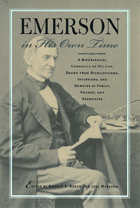 Emerson in His Own Time: A Biographical Chronicle of His Life, Drawn from Recollections, Interviews, and Memoirs by Family, F
Ronald A. & Joel Bosco & Myerson
University of Iowa Press, 2003 At his death, Nathaniel Hawthorne (1804–1864) was universally acknowledged in America and England as “the Great Romancer.” Novels such as The Scarlet Letter and The House of the Seven Gables and stories published in such collections as Twice-Told Tales continue to capture the minds and imaginations of readers and critics to this day. Harder to capture, however, were the character and personality of the man himself. So few of the essays that appeared in the two years after his death offered new insights into his life, art, and reputation that Hawthorne seemed fated to premature obscurity or, at least, permanent misrepresentation. This first collection of personal reminiscences by those who knew Hawthorne intimately or knew about him through reliable secondary sources rescues him from these confusions and provides the real human history behind the successful writer.
Remembrances from Elizabeth Peabody, Sophia Hawthorne, Oliver Wendell Holmes, Ralph Waldo Emerson, Bronson Alcott, Rebecca Harding Davis, and twenty others printed in Hawthorne in His Own Time follow him from his childhood in Salem, through his years of initial literary obscurity, his days in the Boston and Salem Custom Houses, his service as U.S. Consul to Liverpool and Manchester and his life in the Anglo-American communities at Rome and Florence, to his late years as the “Great Romancer.”
In their enlightening introduction, editors Ronald Bosco and Jillmarie Murphy assess the postmortem building of Hawthorne’s reputation as well as his relationship to the prominent Transcendentalists, spiritualists, Swedenborgians, and other personalities of his time. By clarifying the sentimental associations between Hawthorne’s writings and his actual personality and moving away from the critical review to the personal narrative, these artful and perceptive reminiscences tell the private and public story of a remarkable life.
|
|


